In 2019 I wrote a review for Mark Klem's CRINGE! episode. I namedropped lilith while talking about stuff like glitches and Metroid's bug-derived "hidden worlds". I had not seen much of this 2017 episode outside of screenshots and maybe a video or .GIF that I only half-remember. I knew that it was going to be weird and visually noisy. It would not be wrong, however, to say that I had very little idea of what lilith actually feels like to play. I believe that all PWADs are made to be experienced but there is an inescapable essence to this 2017 Cacoward winner that cannot be communicated over a consumable gif or pithy video. I would even go so far as to say that you should play it with as little foreknowledge as possible.
There are a few things that you need to know before loading it. lilith was designed for ZDoom's software renderer and abuses it to anotak's nefarious ends. The final, 2016 revision (v2.8.1) is the target. GZDoom, QZDoom, and Zandronum are explicitly not supported because they will not replicate some of the greatest bits of insanity. GZD will go so far as to crash on MAP03. Attempting to load the .PK3 in these ports will flash you from MAP01 to MAP33, a holding pen for folks who disregard the .TXT for whatever reason. Is lilith worth downloading what is at this point a now historic source port solely to play it? Well, that depends entirely on how you feel about its core concept.
Without spoiling too much in this paragraph and the next, lilith is a shining example of what happens when someone looks past "Don't do that" to further the boundaries of Doom. It does a lot of things to the player's visuals that are literally disturbing. There's a reason why MAP01 has a clear as day seizure warning in bright purple - not that anotak didn't try to avoid causing such a reaction. I myself felt viscerally uncomfortable for some of my playthrough. I believe that this has more to do with my mental model of the game's mechanics and how it is "supposed" to look but I would be lying if I said that it was not taxing as a visual experience. It also challenges your spatial reasoning, the two aspects often working together to undermine any sense of stability.
If you play lilith then you will be opening yourself up to this punishment and if you cannot find anything worthwhile in its artistry then, well, I understand. There is something "DoomCute" about its use of glitchiness as an aesthetic but there is very little about lilith that is conventionally attractive as a Doom mod. Glitch isn't a seasoning - it's the main course, warts and all. I'm probably overreaching here but I would liken it to the difference between the incorporation of electric guitar feedback into performances vs. Lou Reed's Metal Machine Music. Of course, MMM has no underpinning song structure whereas lilith is still Doom under the hood. It's easier than not to try to make a map and end up with something that works because, well, it's Doom. Point gun, shoot demon. Find key, open door. Exit level, load next. None of the crunchy gameplay aspects are changed. With lilith, it really is what's on the outside that counts.
And it is, of course, made to look glitchy. anotak remixed and warped an impressive array of assets in order to paint a world that was recognizably descended from Doom. Textures shift from one weird wallpaper to the next. Sprites appear chopped up and reassembled into random pieces or with parts blurred beyond recognition. It also impacts the auditory but it's more like a universal, cyclical mask that occasionally cuts audio out or distorts it by adding things like the underwater effect. Which isn't to forget the remixed soundtrack, sporting a host of familiar but obviously wrong edits of Doom II staples. The blaring, apocalyptic tone that plays at the title screen sets the tone for what follows.
What is so off-putting about lilith? It's ugly as sin, for one. The starting room brings to my mind the most garish textures found in Hacx, specifically the cyberspace sections. Nearly all walls and floors stutter in sync as if the renderer is stuttering with the latter occurring far less frequently. This also applies, of course, to a jumble of midtexture bars that floats above a pool of water whose inlaid sides are invisible. There is a puke-colored crescent in the pond. All of the torch- and lamp-sprites are cycling rapidly through a series of carefully corrupted alterations. If you entrust your sixth sense and open up a nearby secret, the door disappears upward with the alcove having no floor or ceiling, instead treating you to an unfiltered view of the sky. Which, of course, cycles through weirdness on its own particular timer. It's difficult to tell what sprited garbage is sitting inside but, yeah, after you grab the item it sure did have the same color scheme as the rad suit. Nevermind the jumbled, hanging corpses.
On UV you at least get the opportunity to make heads or tails of all this visual noise without being beset upon by any monsters. The sole voice of dissent is a zombie who has been caged within a sluice. The surreptitious instant teleporter that routes you to the shotgun, not that thrilling. The weapon is bobbing, though, on a pillar erupted from a clumsily-warped pentagram. This is where lilith fires one of its first shots at your security as garbaged-up imps are freed off camera and walk through the barred window to attack. It's a pretty forgiving ambush on either front and I can think of worse ways to be broken into dynamic combat in a visually disorienting locale.
This is just the tip of the iceberg, though. lilith goes way beyond a pile of corrupted sprites and wallpapers. The result of anotak's careful work is a collection of bugs that playtesters have been ruthlessly squishing for years. Maps are typically designed around the limitations of Doom's renderers. This world exists within the forbidden, unexplored space where most authors have dared not tread. It is hard to think of any way to use these in a "typical" PWAD. The community did a great job of selecting engine exploits that are useful for people who are attempting to create microcosms that at least nominally resemble reality. Self-referencing sectors revolutionized mapping so, as beautiful butterflies, they're allowed to flit about the garden.
Just about everything that is done in lilith wouldn't fly in a "professional" PWAD because, on a functional level, it only serves to confuse or disorient the player. Fair enough! I wouldn't want to see most if any of these glitches in a typical mapset, either. I'm perfectly fine with them here, though. This isn't your average, everyday Doom episode and it wouldn't have any real teeth without anotak's abuse of ZDoom's renderer. The alternative would have been an aesthetic without a pulse. The author certainly alienated a part of the userbase through the particulars of lilith's construction. No one person in the Doom community exists solely to serve it, however, and no artist is obligated to serve what is essentially a commercial interest in broadening the appeal of their work.
"Refraction Error" (MAP03) offers some of the best examples of visual weirdness. As you get closer to the northwestern wall of the second room you see it start to distort. Press up against it and you push on through and against a mirror image. The next chamber appears to have you standing above a room but it might take you a minute to figure out that the floor is showing you the view of the space at the bottom of the stairs directly adjacent to you. The HOM effect at the following drop is odd but when you cross the threshold you're exposed to... another mystery room below! Except this one has monsters in it and you can't seem to hit them. Once again, you are being treated to a view of the space next door. The sloping ceiling at the top of the wall? From the stairs you just came from. And if you were panicking because you couldn't shoot the imps who were so plainly below you then, well, I did too. anotak pulls a variation of this same trick in the next link in the chain but it's more credulous since the monsters are so near, like you're literally knee-deep in the dead.
The next room is an even bigger mindfuck since you are being shown the contents of a surrounding outer ring - complete with monsters - within an inner chamber. Some of the zombies are glorified holograms while the others are very real and can or cannot be seen depending on where you are standing in the room. And when you kill what you can, it triggers a crusher which is a very credible threat. Up until it appears to leave you alone. The following cross-shaped chamber is a simple setup but also a real hall of mirrors that shows you a handful of shotgun guys every which way but the one where he's coming from. At least, until he leaves the sphere of influence of the glitch. The technicolor piston room is visually busy but doesn't have any real tricks apart from past experience and stuff bleeding into the floors making you uncertain as to which Hell knights or revenants are "real".
Of course, anotak wouldn't play their whole hand so early and more glitches are fed piecemeal as you progress through the mapset. Some are more effective than others. Perhaps my favorite its "Fatal Exception" (MAP08) and its dual-polyobject room. The two anomalies travel back and forth on rails and represent space where there is truly none and the confusion is exacerbated by the presence of revenants in the encounter. You'll probably react quickly and, in the heat of the moment, the nature of what's going on might not be readily apparent. Especially since the polyobjects portray another segment of the same room that you're in.
There are a lot of other little touches that exist to portray a warped environment. You'll occasionally come across a dead zone. These spots mess up the renderer when you're looking at them and when you step inside you'll see two alien planes, floor and ceiling, stretching out into eternity. Various pieces of the terrain wiggle up and down ever so slightly. Other, rare floors randomly move things around at a rapid pace. False floors figure into a few big surprises. anotak also makes use of sloped surfaces. They are used purely to show Doom's traditionally flat surfaces being warped into a reality that vanilla - or even Boom - was never capable of portraying.
With all the crazy visuals it's good to know that you can depend on the weapons to behave reliably. Monsters, not so much. lilith uses a combination of scripting, careful placement, and modifier flags to make the classic bestiary seem slightly unstable. Don't expect any new super-warped things like MISSINGNO, though. The new properties turn enemies into color-coded silhouettes. Pinkish-purple is the worst of the lot but - on UV - is confined solely to "CRC Failed" (MAP06). Such enemies can melee attack you as long as they can see you. It's an effective echo of tales from the void where, at the very fringes of the microverse, reality breaks down and the player can be subject to being torn apart by every living monster ("telescratch").
The blue glitch that debuts in "Guru Meditation" (MAP07), not so interesting. Unless I'm missing something, it adjusts the health of any affected monster to accommodate roughly three rocket blasts. Give or take a few if the creature in question is immune to splash damage, of course. This is a bit of a shock when you see it for the first time since it'll probably be on a lowly zombie trooper. It's easy to adjust to, though, even if it means that the author now feels comfortable throwing now-squishy Cyberdemons at you. I was absolutely not prepared to see the modifier on a big cell pack, though, which made for the most terrifying lilith moment of all.
"Fatal Exception" has its own unique monster modifier. The black-silhouetted glitches aren't obvious at first glance since they're standing in the center of the "Living End"-style cave but their presence is felt in their slower-moving projectiles. It doesn't feel particularly glitchy but it does pay off from a combat perspective as the slow-moving walls of plasma and occasional rockets become a different sort of area denial effect. It may not be as cool as the flaming wreckage of S.T.R.A.I.N.'s polydrone but it's still a bit of a game-changer. And, who knows? Maybe someone will pick up lilith and add in more reality-bending foes.
The rest of the aberrant enemy behavior is more a product of how they're presented and includes things like monsters walking on air above you or repeatedly falling from the sky. You'll also see a few occasions where enemy projectiles are just hanging out in the air. Don't touch them! One particular arachnotron phases in and out of several different locations in the large courtyard in "Chopping Down the BSP Tree" (MAP05). anotak also appears to have toyed with an effect that warped monsters in and out of reality but it was sentenced to "The Abandoned Files" (MAP98). The bonus levels also include a cute map with a moving death wall (MAP34, "Flow Control") as well as an experiment that periodically teleports the player - not the monster - between two linked worlds.
lilith also has something of a New Game + arrange mode one of its three secret difficulty settings. The first blank has a much higher monster density and liberally uses the blue and pink variants through the entire set rather than confining them to MAP06 and MAP07. According to the developer, it sort of started out as a realm of exile for things removed in order to adjust the difficulty to be easier. You'll also see even stranger instances of the breakdown of reality; check out the similar teleporter chambers in MAP06 in particular. The last setting is New Game + but Nightmare mode so good luck with that. Even more ridiculous is the second hidden option which is New Game + but all of the monsters are invisible. I'm probably in the minority but I would have loved to have seen something like ghost monsters as hinted at with the imp ambush in MAP03. It's one of the better-understood engine bugs and makes for some pretty tense encounters. Just being able to walk through walls would be killer.
Maybe it was too much to expect of the player. You're already being fooled as to whether or not some of the monsters are even real. It turned out that they were, of course; you were just looking at an image duplicate. lilith asks a lot for all of these visual glitches, scripts, and monster traits and, for some players, it's too much. There are high-profile community members who cannot even be bothered to handle the basic behavior of the more bothersome Doom II monsters. The common thread between dissenters seems to be something to the tune of, "Why bother?" There is an ugly, unspoken undercurrent in that anyone who is not catering to their particular tastes is doing the community a disservice, as though they would have been better off making nothing at all.
The history of WADs and mods is too rich to indulge in this train of thought. It's interesting to think of the past twenty-eight or so years of authorship as an evolutionary process but the shadow side of this narrative stifles creativity by implying that the community has selected for the things that Doom is good at and against what it cannot do well or is not "fun". This certainly holds for authors who want to hold themselves to the standards of professional-grade level designers and dovetails with the concept of jockeying for a player's time. Because we are human beings, our lifetimes are finite and we are not obligated to fritter our span on the mortal coil away on things that do not satisfy us. Anything that we perceive of as wasting the player's time, whether it's confusing layouts or "pointless" backtracking or even dreaded monsters as doors, is not desirable. After all, if the player becomes confused, frustrated, or bored, then they will abandon playing your mod. It's easy to quit and costs them absolutely nothing beyond the time that they spent until that point, after which they may be less likely to indulge in your creations.
This perspective subtly infantilizes players and turns PWADs into a commercial product where you are looking to peddle your WAD or mod for a measure of attention. Worse, it is a twofold guilt engine that curses you for daring to waste the lifetime of a fellow human being and tells you that no one wants to experience your little world because of your design decisions or lack thereof. By failing to adhere to these commercial principles you are committing an act of violence against your potential audience that is at best due to ignorance and at worst perpetrated through trolling malevolence. It seems like an appeal to common sense that any author worth their salt would want to smooth out all these road bumps in order to both get and keep more players.
The development of the slaughter scene has in some ways mimicked the increasing prominence of combat-optimized level design. It has rejected the focus on the greatest common Doominominator, however, and sustained itself for the most fundamental reason. Community members like to play slaughter maps and thus make them. They do not care about how many folks are not lining up to massacre demons in increasingly challenging scenarios. Except, I guess, when some consumer wades in to kick up a fuss because they are not part of the PWAD's target audience. The increasing opulence of slaughter environments and encounters gets some eyeballs, but their authors have not bent over backwards to accommodate less-skilled players. And why should they when the most common complaint appears to be where the bar for UV, which represents the highest "normal" difficulty, is set?
The community has determined through successive experiments that slaughter is something that Doom can and does do well. It is a natural extension of its combat model and its authors are continuing to discover novel encounter setups that push our ideas of the limitations of idtech1 and its derivatives. It fits within the evolutionary paradigm as a success because of its user support and history. Its players are savvy enough to distinguish challenges that may be simply overwrought or not satisfying to clear from a UV-Max perspective and apply lessons learned to the next exercise. It also helps that slaughter seems to go hand in hand with gorgeous, enormous environments.
lilith is not beautiful or fun in a traditional sense and much of the visual noise is evident from the moment you stare into MAP02 or, really, most of its screenshots. When glimpsed through the lens of the evolutionary paradigm it must be worthless because it is not inherently pleasing. Very few folks had ever made a glitch-informed work, after all, therefore there must not be an audience for it. I was personally surprised that it took so long for someone to finally bring a more or less fully-formed iteration of this aesthetic to Doom but less so as I worked on this review. We as a community have a very good idea of what sort of bugs we can expect to encounter during a playthrough of vanilla Doom. Demo recorders know what they can exploit in order to facilitate their speedruns and authors have even turned some engine mishaps into features.
We know too much to even attempt to pass something like lilith off as a corrupted PWAD. There is no case that I know of that would cause all of the texture- and sprite-warping seen here, but there are some familiar touches. A few of the more garish edits bring to mind the vibrant pixels generated from the Tutti-frutti effect and are a result of simulating the game reading some of Doom's lumps as texture data. I also encountered a considerable number of moments in ZDoom where the game hung up. The ragged performance does sort of suggest that the executable is trying to eat itself but I've played enough PWADs that drug the executable down by pushing limits to know that it wasn't going to crash. The idea of all of this weird, glitchy behavior is preposterous so it only figures that anotak hints at something else as the root cause.
lilith is not presented with a story, just a humorous aside about keeping Doom II installation floppies attached to the computer with magnets. Every exit gets its own victory text and they read for the most part like error messages. Eventually, though, things get weird - like the "YOU CAN PENETRATE INTO THE HAUNTED HEART // BUT SOMETHING IS WRONG." anotak is more suggestive than anything, thankfully, and the creepy mystery is left to the player's imagination. Consider, though, that MAP08 features a number of apparent voodoo dolls (copies of the player) that can be killed with impunity. In fact, one of them will probably be telefragged in order to reach the final exit, which suggests the title - "Fatal Exception". You'll also see - unless you're some kind of a glitch king - that the player entity, when killed, spawns a revenant that then starts fighting monsters. There's a desperate cry before the cast call of a repeated "WHO AM I" - or is it a mid-performance repetition of "I WHO AM"? Lastly, Doomguy gets a title of "OUR //////" in the finale whereas the revenant is "=======".
All of these clues are nice to help suggest why lilith "breaks" the way that it does when we are relatively assured of the firmament of Doom. Even so, it's not like the breadth and scope of the altered states are not without precedent when compared to what little of what I personally know about game glitches. Pokemon's MISSINGNO gets all the fame but is relatively harmless. The ZZAZZ glitch takes a bat to the game's back-end and results in numerous opportunities to crash the game, though industrious entomologists have discovered just how far you can push it in its then-broken state. As it just so happens, it's all in a name!
Doom is an odd case because of the WAD paradigm. All of the assets and level data are divorced from the executable so it's possible to modify what you see and hear without affecting the underlying game logic. The effects of wide-scale and random corruption appear to be largely unproductive, however, and do not result in anything that is remotely playable. Even a tiny boot to a map's LINEDEFs pulls vertices in wildly random directions, resulting in something like seams in reality. The visual effects are not entirely unlike some of the tamer things glimpsed in lilith. The more thorough the damage, though, the crazier the garbage.
The engine appears to be more likely to crash over instances of severe WAD malformation than allow you to keep playing. lilith doesn't, of course, because it is composed of a carefully curated collection of corruptions. Glitch has long been an aesthetic to itself but it's pretty easy to digest in traditional art forms like music and, err, visual art. Incorporating it into the medium of a game is a completely different beast. The most in-depth experience that I've had with this is Axiom Verge. You are most obviously allowed to distort enemies - glitchifying them - as well as pare away at the game world's corruption, the Breach. Delving deeper into its Metroid heritage, you can access hidden worlds that are generated through algorithms and which attempt to add an additional air of uncertainty to the typical exploration loop.
There is something natural to me about the pairing of glitch with the Metroid format. The original game didn't even have an internal roadmap or anything to clue you in to now fundamental stuff like the ice beam turning enemies into platforms. Many of the setups are now obvious with my years of experience but the average player may be chronically unsure as to whether they have the right tools for a given job or, failing that, the skillset. There are so many collectibles to find and discerning their locations can be at times opaque. The X-Ray beam is an interesting addition to the player's toolkit for its ability to reveal the reality behind any given situation. By that same token, the Power Bomb can quickly show what destructible blocks are in play.
All of this uncertainty and trial by perseverance is emblematic of dealing with glitch as a core component of gameplay and its inclusion in Axiom Verge is still fairly sanitized. The player may not know whether an encountered roadblock is due to a lack of mechanical ability or being unable to wrap your head around the problem (something I often experience in Baba is You). You hope, in a commercial game, that its designers managed to eliminate legitimate, game-breaking "bugs" resulting from programmed, glitchy behavior. I also pray, when I play a Doom map, that an author's rudimentary playtesting has ensured that I don't run into a fundamental problem while playing their map. Like, I dunno, essential doors that don't work or a messed-up teleporter destination that turns into a recursive teleporter loop.
lilith has embraced much of the aesthetic of glitch but anotak has declined to incorporate many of its gameplay implications. You don't get any special abilities that modify the world or its obstacles. The closest it comes to the sort of trial-by-navigation that is somewhat endemic of puzzle play is in "CRC Failed". The level requires the use of several teleporters that are interlinked between areas with sympathetic architecture. This may not be intuitive if you are one of the many players who declines to check the automap but the map eases you into the idea up front by dropping you early into the pink glitch catacombs. anotak is always trying one way or another to lead the player and when things are at their most visually disturbed - e.g., "Refraction Error" - the world consists of a series of linear jaunts, like sideshows.
In spite of all its purposeful visual glitches and linedef magic, lilith is still recognizably Doom. It has little if any of the baggage that subsequent FPS games have unloaded on the community conscience since 1993. Sloped surfaces exist but they are exclusively used to portray the unraveling of simulated reality. Jumping is not only unnecessary but forbidden. Polyobjects - especially those seen in "Fatal Exception" - are used not to beautify but to create lethal anomalies for the player. The language of its design subtly communicates a disdain for these "advancements" while also harkening back toward Doom's dungeon crawler DNA. Classic floor and ceiling crushers exist alongside these sector machinations but they are straightforward once triggered and not nearly as ruinous as their vanilla counterparts, owing to their increased speed.
anotak respects the time of players by ensuring that lilith is up front as to the nature of its experience and laser-focused in its scope. This begins from the MAP01 warning through the immediate immersion into the visual noise and spatial distortion of MAP02 and escalating to MAP03's funhouse renderer abuse. I empathize with those voracious consumers who are compelled to struggle through its artifice of artifacts, however. The PWAD made waves back in 2017, the coveted Cacoward making it especially alluring. If lilith is not immediately to your taste then I hope that you do not push yourself to suffer its mystique. It is not likely that you will reach an epiphany of appreciation during its latter stages.
For all of its 2017 buzz, I was hoping to see some sort of impact on the Doom community in terms of glitch-like projects. Its impact has been less than apparent. The reason, I suppose, has much to do with the highly personal nature of creating PWADs but is almost certainly more complex. The unreality of lilith is a cocktail of personally corrupted art assets created for the occasion as well as visuals informed by an invasive knowledge of how not to use ZDoom 2.8.1's renderer. The resources used to clothe lilith are available to anyone but using them involves the adoption of some aspect of anotak's singular artistic vision of what a glitched world founded on Doom might look like. It also necessarily juxtaposes both creations. This may be daunting if the renderer exploits seem too difficult to learn, doubly so if you feel limited by the now frozen features of 2.8.1.
There is a precedent for a modding community to use a legacy version of a game as the bedrock for their community. I was utterly confused by Minecraft's situation back when I started playing with my son but the focus on Forge for v1.7.10 was not, in retrospect, a surprise. Games - let alone cultural revolutions like Minecraft - are not source ports, however, and the ZDoom devs do not typically deprecate mods (based on stable port versions). Excluding the really early ones that were busted due to the churn of the first few years of its development, anyway. I would love to see glitch-minded individuals band together under 2.8.1 to abuse the renderer but if lilith hasn't kicked off a movement by now then it probably won't.
It's a shame because I am now thirsting for glitch-themed maps. Commentators suggest that lilith went on a bit too long but I feel that there is so much more to dig away at the sides of this trench that anotak has struck. I want to see a token "hidden worlds" megaWAD that's made of broken and remixed geometry from Doom II in the vein of Metroid, something teased at with the glimpse of "The Gantlet" in MAP03. Maybe I could even accept inescapable, dead ends in such a format. What kind of craziness could you get up to if you started glitching monster behavior beyond lilith's monochromatic nasties? The community has already employed the arch-vile jump for secrets, rare required progression bits, and even its own megaWAD. The possibilities are limitless.
These are my daydreams, though, and no one is going to make my fantasies for me. When you play Doom then you are partaking in someone else's. Some are easier to fall in synch with than others. This is the fundamental secret behind the Doom community. lilith ultimately exists because anotak spent the time and effort to make it a reality, for the same reason that puzzle maps persist. The early years of Doom appeared to be the heyday of this branch of level design and why wouldn't it? The community was still close to the dungeon crawler trappings of the IWADs and the wiles of Sandy Petersen et al have not aged as gracefully in the minds of players looking for action over the abstruse.
It seems especially strong as a movement due to the sheer volume of releases from folks like Jim Flynn and Bob Evans, eventually culminating with Eternal Doom III, after which it saw a sharp decline. Evolutionary criticism suggests that the community as a whole has learned that some things, like the mid-'90s switch-heavy style of puzzles, do not work / mesh well within the basic structure of Doom. These unattractive aspects were then excised while the spectacles of adventure and exploration that often accompanied them were woven in to the community's DNA. There's some truth to this narrative but it becomes clear as I trawl my way through the vast, user-created works that people do occasionally make adventure levels in the dense style of Flynn or Evans.
These are works of passion, though, and testament to the importance of the individual in the community. Cryptic levels that are slowly unraveled or "unboxed" are personally satisfying to such artists as both players and authors. There's a lot of fidgety business involved in making such sector contraptions but it hasn't stopped authors like yakfak and dobu gabu maru from dropping things like Sheer Poison and The Gift on the community. Even Erik Alm, who is known as the architect of the "modern style", created a massive nine-key puzzle / hunt in Europa 1. While admittedly optional it's even less approachable as three of the keys are one-time only artifacts that require both foreknowledge and deft maneuvering in order to snag them. The interest did not develop into the rest of his catalogue as it is popularly interpreted (the secret language of speedrunners notwithstanding) but the desire was certainly there.
Puzzle maps as I understand them were never popular to produce. They remain the machinations of a select few individuals who craft them as long as the drive sustains them, occupying an aspect of Doom that's much smaller than slaughter but no less important. lilith now exists and can serve as a template for other authors to permutate their own style of computer corruption should the fancy strike them. It's not as though the community hasn't always had a fascination with glitch. Its practical applications pervade vanilla mapping, pushing beyond the limits that id Software intended, and things like the all ghosts bug or Medusa effect have an unearthly air. Some authors, like Doug the Eagle, went in a different direction with "don't do that". The Sky May Be uses a trigger to crash the .EXE or abuses a common mapping mistake to turn much of the map into a crushing death engine.
While lilith's particular take on glitch has not caught on with authors, I am loathe to think of this as a gimmick or idea that has run its course. When mouldy released Going Down in 2014 I recall several prominent people suggesting that its use of Boom voodoo scripting would be revolutionary. And who wouldn't, after seeing crazy stuff like the haunting elevator maze descending into Hell in "Insanity"? That's not even counting more under-the-hood stuff like the random monster teleporter ambushes in "Dead End". mouldy pushed the limits of what we imagined Boom to be capable of, previously explored by authors like Chris Lutz in his "fetishistic" detailing in Phobos: Anomaly Reborn. Few that I know of have followed.
And there aren't a great many reasons to trail in lilith's footsteps. Like The Sky May Be, people either praise it or condemn it using the strongest terms imaginable. I'm not particularly shocked by the quality of feedback given that the community has a lot of pride in promoting its expansive content and combat-oriented focus. Over the years, however, it has seized upon a notion that we are progressing toward whatever it is that Doom does the absolute best. It's as though the current scene is the logical end point of the past twenty-eight years and it is always moving toward something that its harder, faster, better, and stronger. This has caused gameplay to become largely synonymous with combat to the detriment of anything that would dare inhibit the pipeline of violence.
It's a shame because it runs counter to the freewheeling spirit that kickstarted the community in its infancy. So much excitement came from the relative ease with which people could make microcosms in Doom and then share them. Hell; it was even easier to record a demo so that you could literally watch someone play through your little world. Every MYHOUSE was a person who was thrilled at the idea of recreating some semblance of their home. It's gotten even easier to make stuff for Doom, though, and the new barriers for entry consist of appreciable anxieties. We have reached such dizzying heights in craft that many players find comparatively basic exercises to be almost reprehensible. As a widespread community, the Doom diaspora has become numb if not hostile to human beings delighting in the miracle of their own imagination because it does not meet its standard for entertainment.
Everyone has at one point or another forgotten the power of their voice whether it is as minor as a comment or the act of creating - and displaying - a personal wonderland. I appreciate folks who work hard at creating polished, buttery-smooth gameplay and I understand that it is central to their satisfaction to create something that can entertain a broad variety of players. I also love to see people make things that demonstrate - for lack of a better phrase - the authors' specific interests, or something that is made for its own sake. I do not mean to imply that one of these drives to produce art is superior to the others or that the architects behind the former are not being true to their own beliefs. I think that is essential to the health of the scene for both ethe to have a stake in it.
Influential works show the community at large new depths and capabilities of Doom. Sometimes it's figuring out new twists on old standards, like the insane arch-vile merry-go-round in Sunlust's "Go Fuck Yourself" (MAP29). At others, it's providing a style of action that resonates with players so much that they feed their experiences back into their own works. You can trace such a lineage through the hardcore / slaughter scene but it most popularly describes the relationship between Erik Alm, Skillsaw, and how many authors handle combat today. lilith demonstrates an aesthetic that is more or less brand new to Doom and also presents renderer glitches not as shortcomings but as new possibilities for the ZDoom engine. If I was ever looking to create something that professed to be a reality-bending mapset along the lines of Impossible or Beyond Reality then I would take a long, hard look at this.
I enjoyed lilith. I am absolutely okay if you did not and may even be alone in asking for things like deliberately mangled IWAD content. This meandering review-cum-essay is probably too dang long but writing dredged up a lot of feelings that I've had about the community since something like 2014. I hope that you can respect that someone spent time and effort to make lilith and perhaps even recognize the sheer adoration for Doom that oozes from its every vertex. We know too well how the game operates but maybe, for a moment or two, anotak can take you back to a time when games still had the magic of mystery about their inner workings.


lilith
by "anotak"
BONUS LEVELS
| MAP33 | This Isnt ZDoom |
|---|---|
 | You shouldn't end up in here unless you try to play lilith in anything other than ZDoom, in which case you should have really read the .TXT. |
THE HOWLS ARE NOT WHAT THEY SEEM


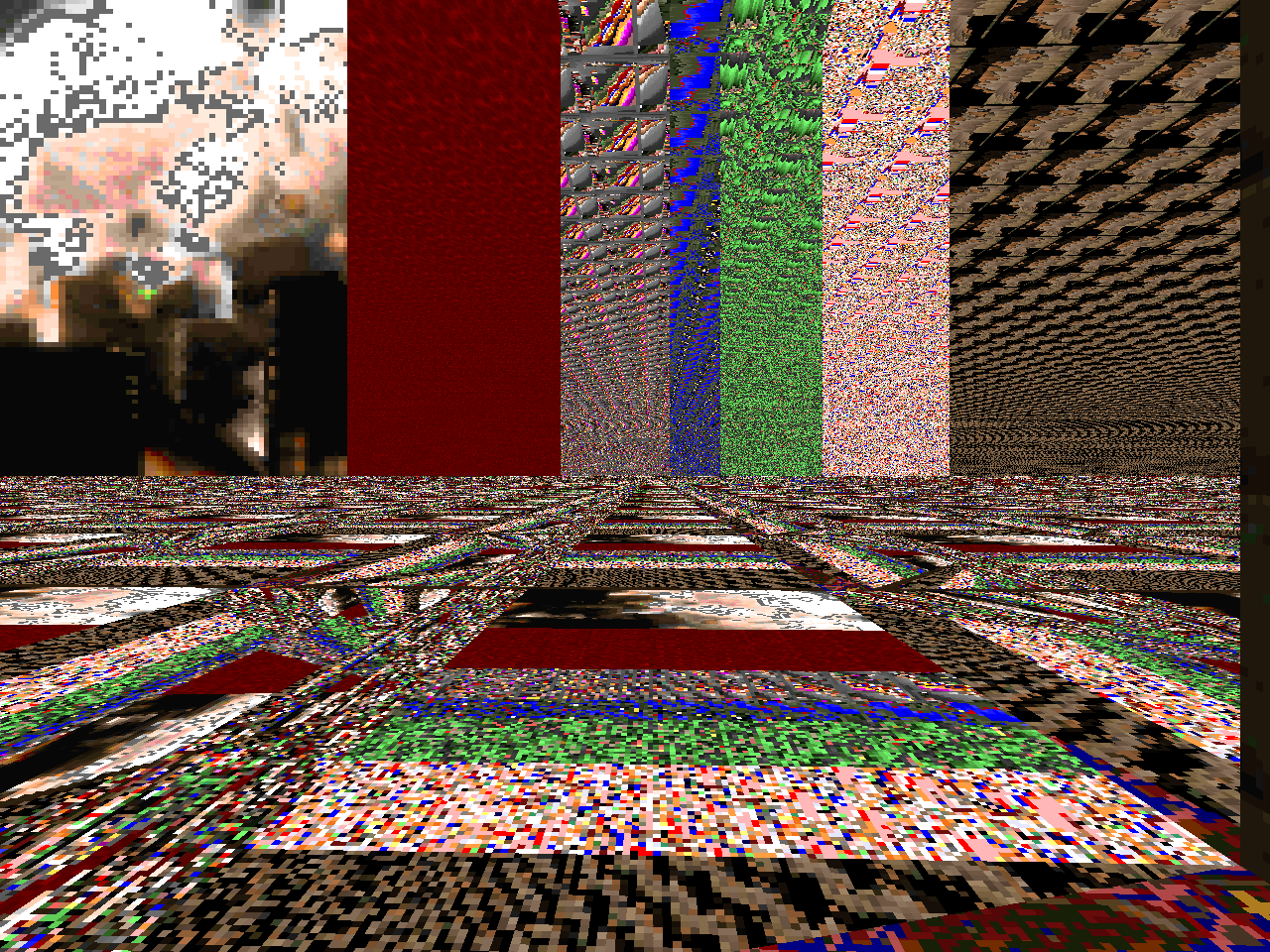
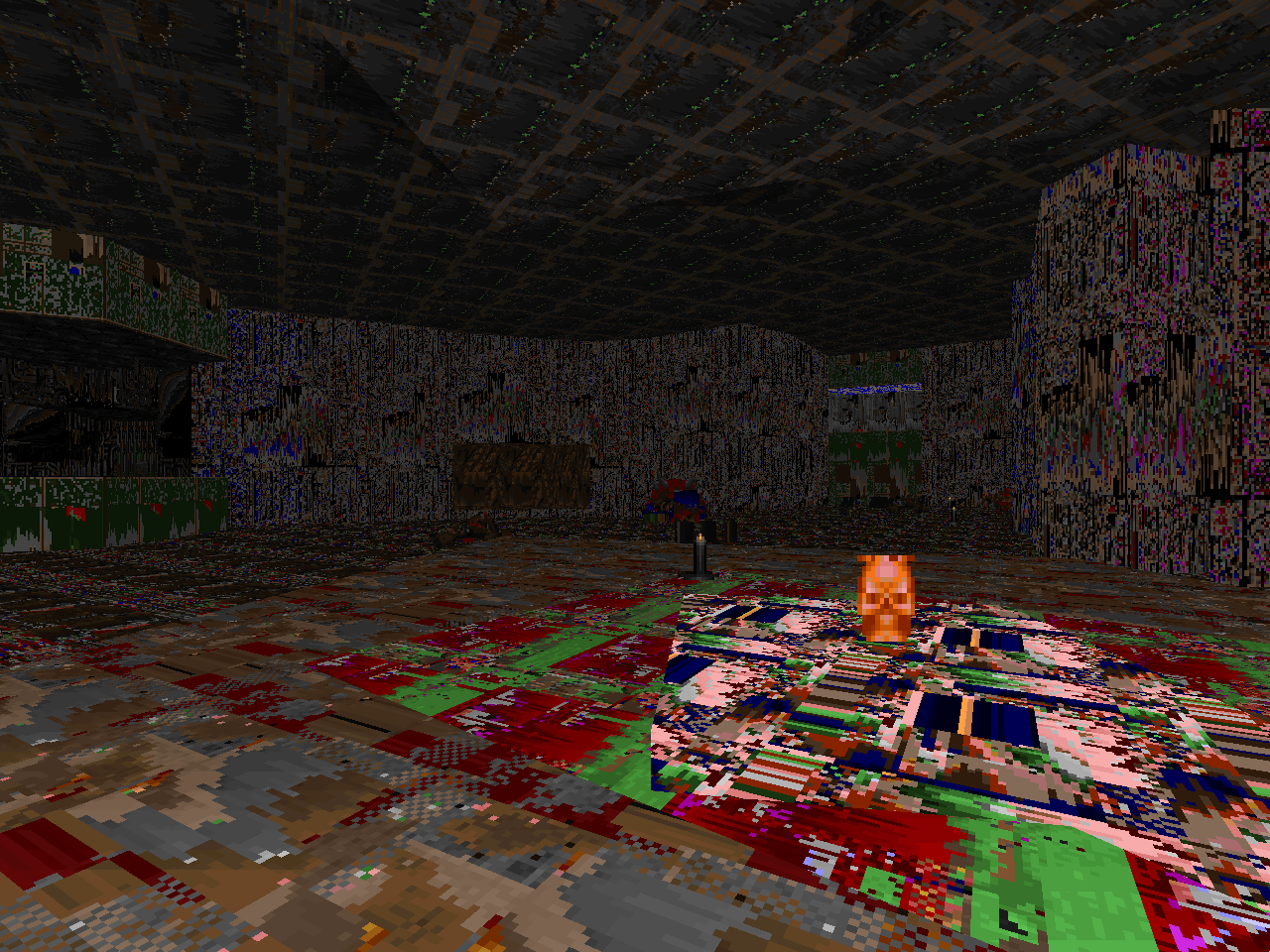

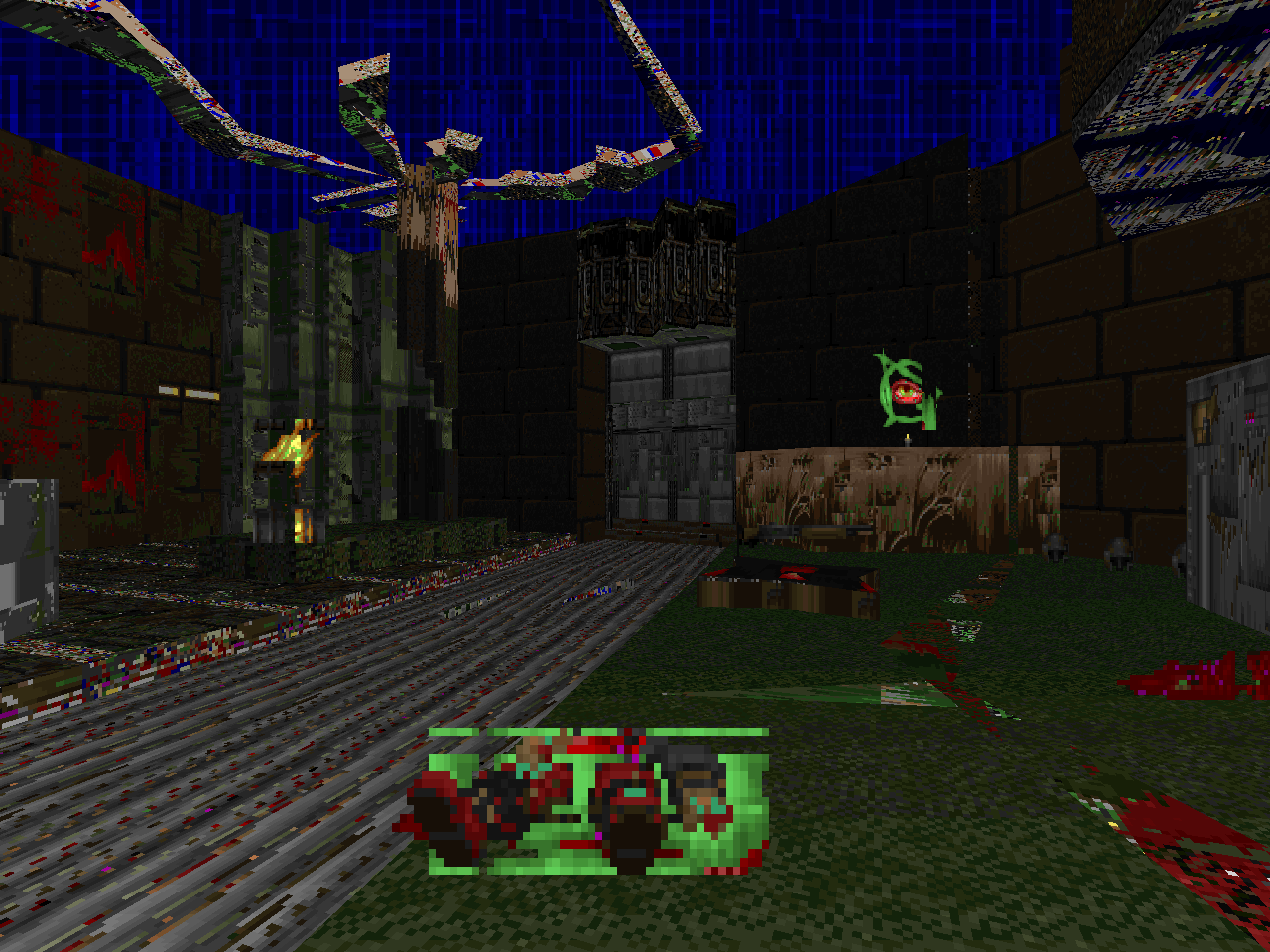
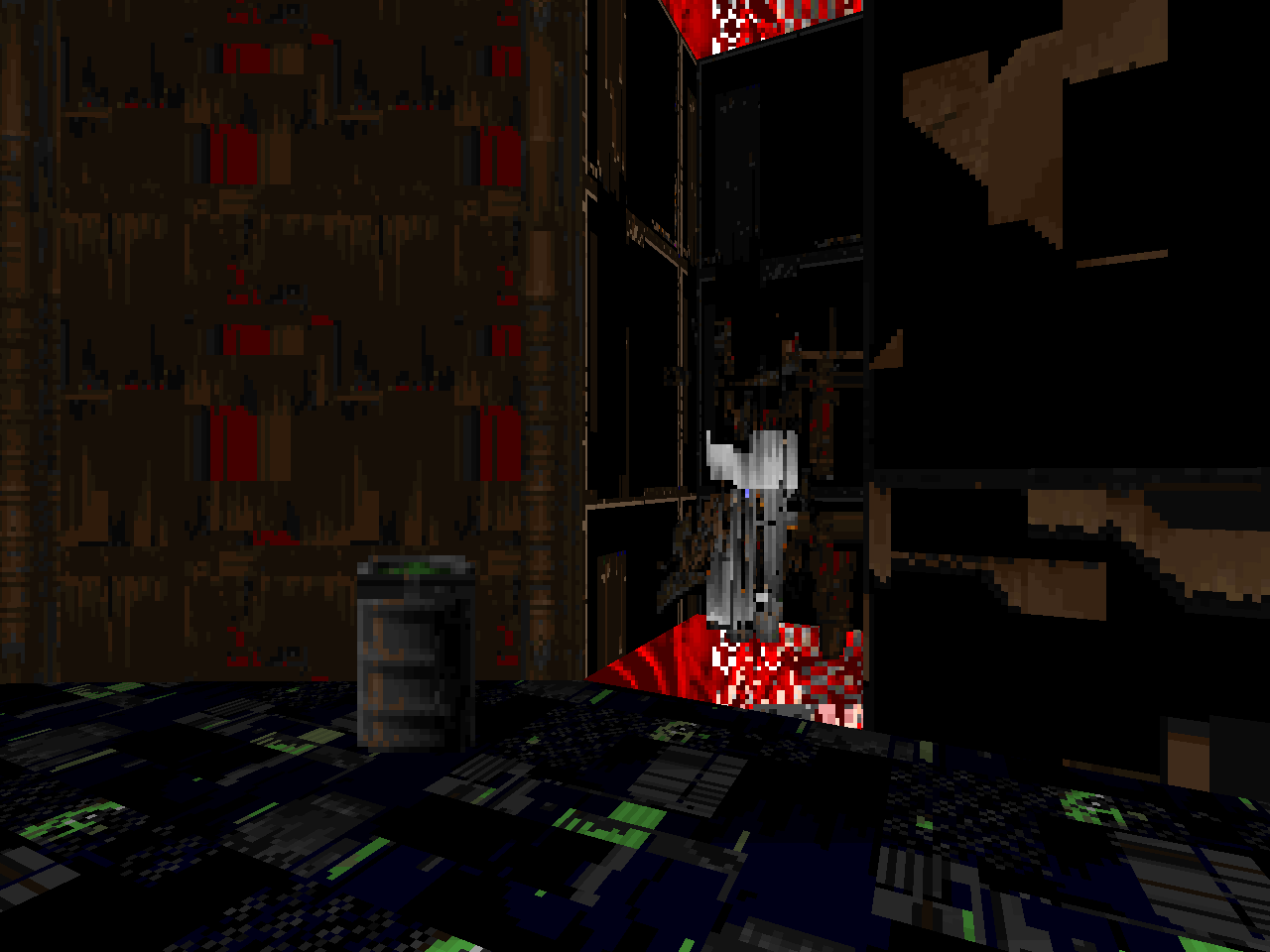
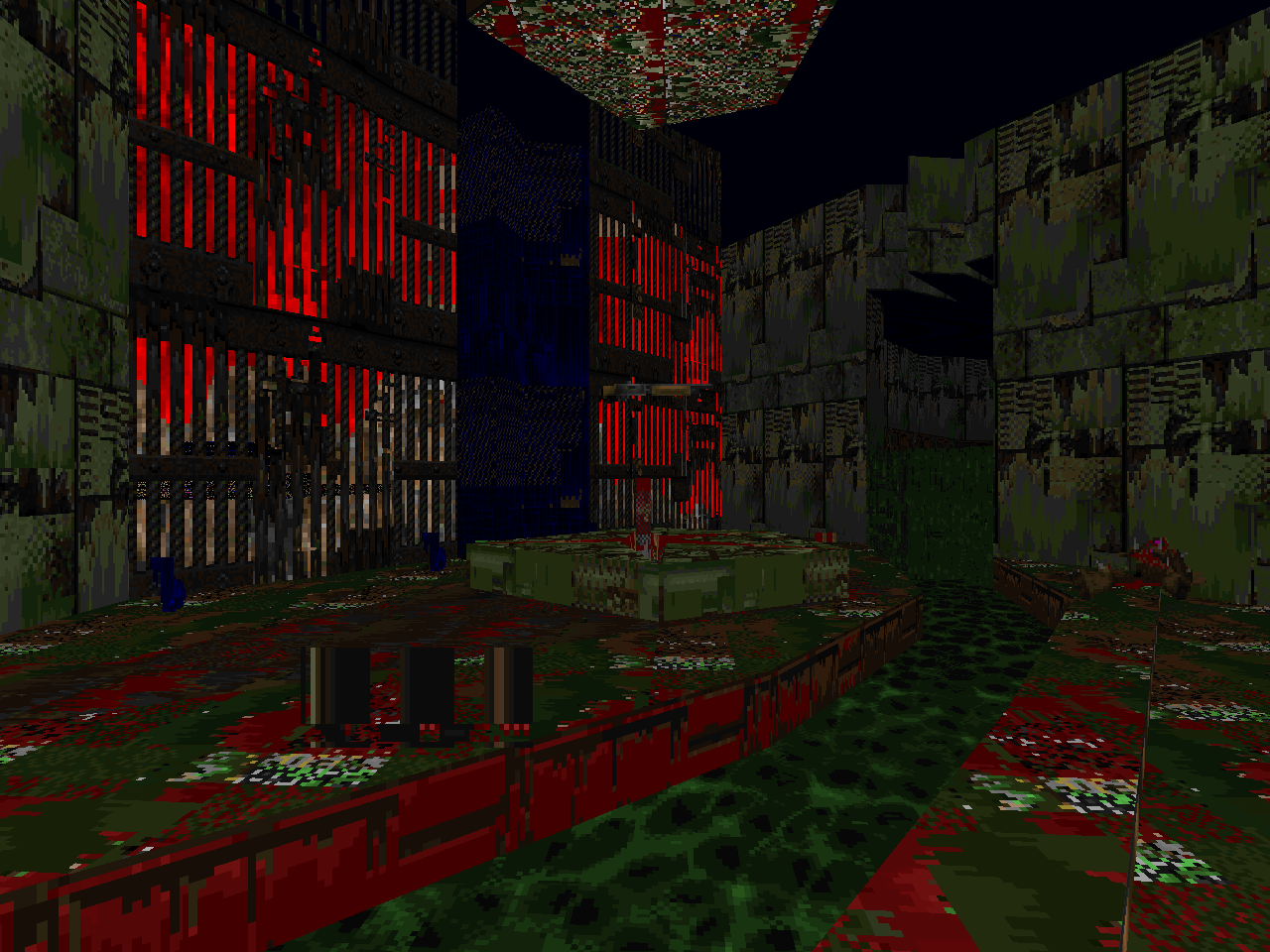
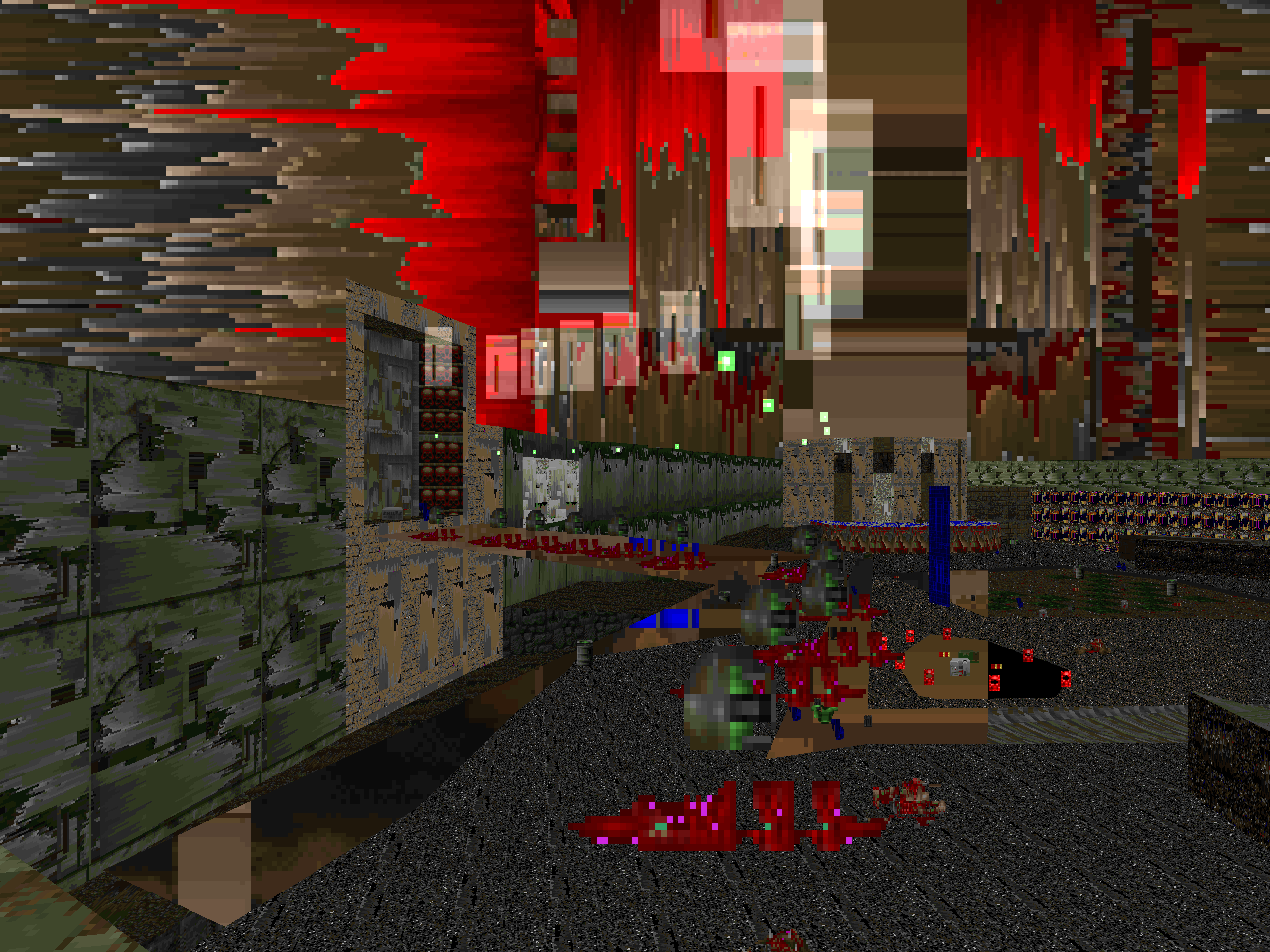
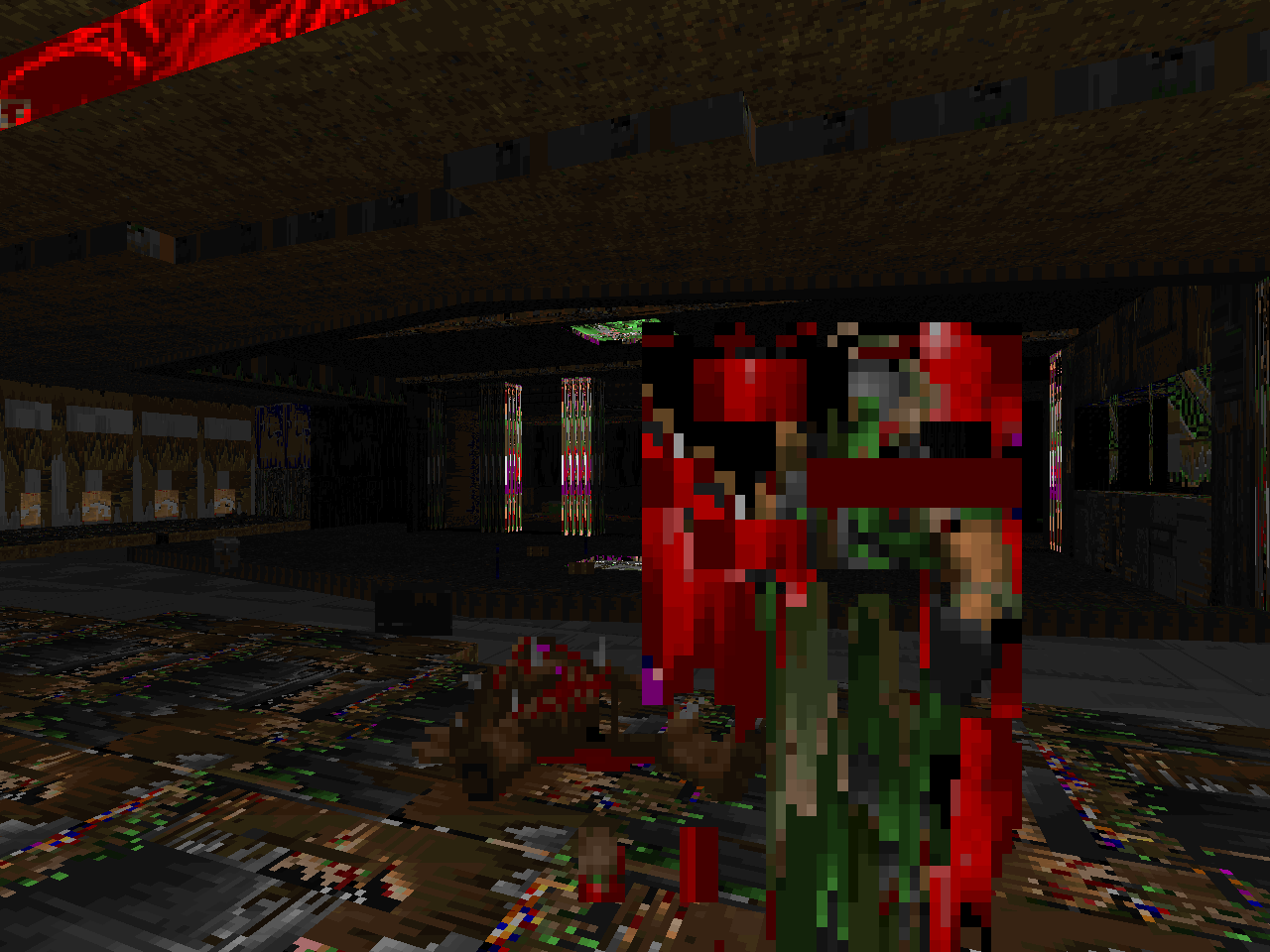
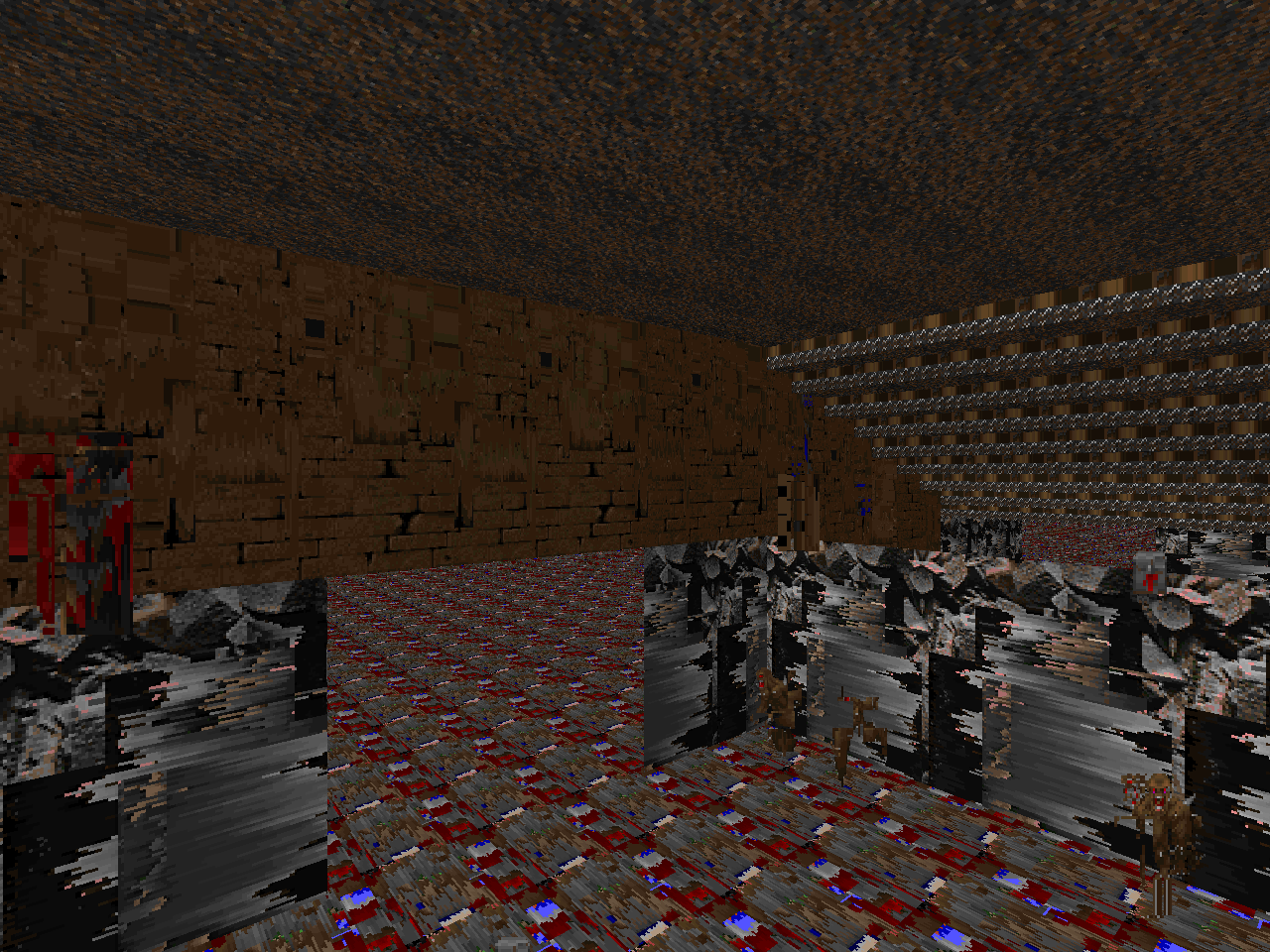

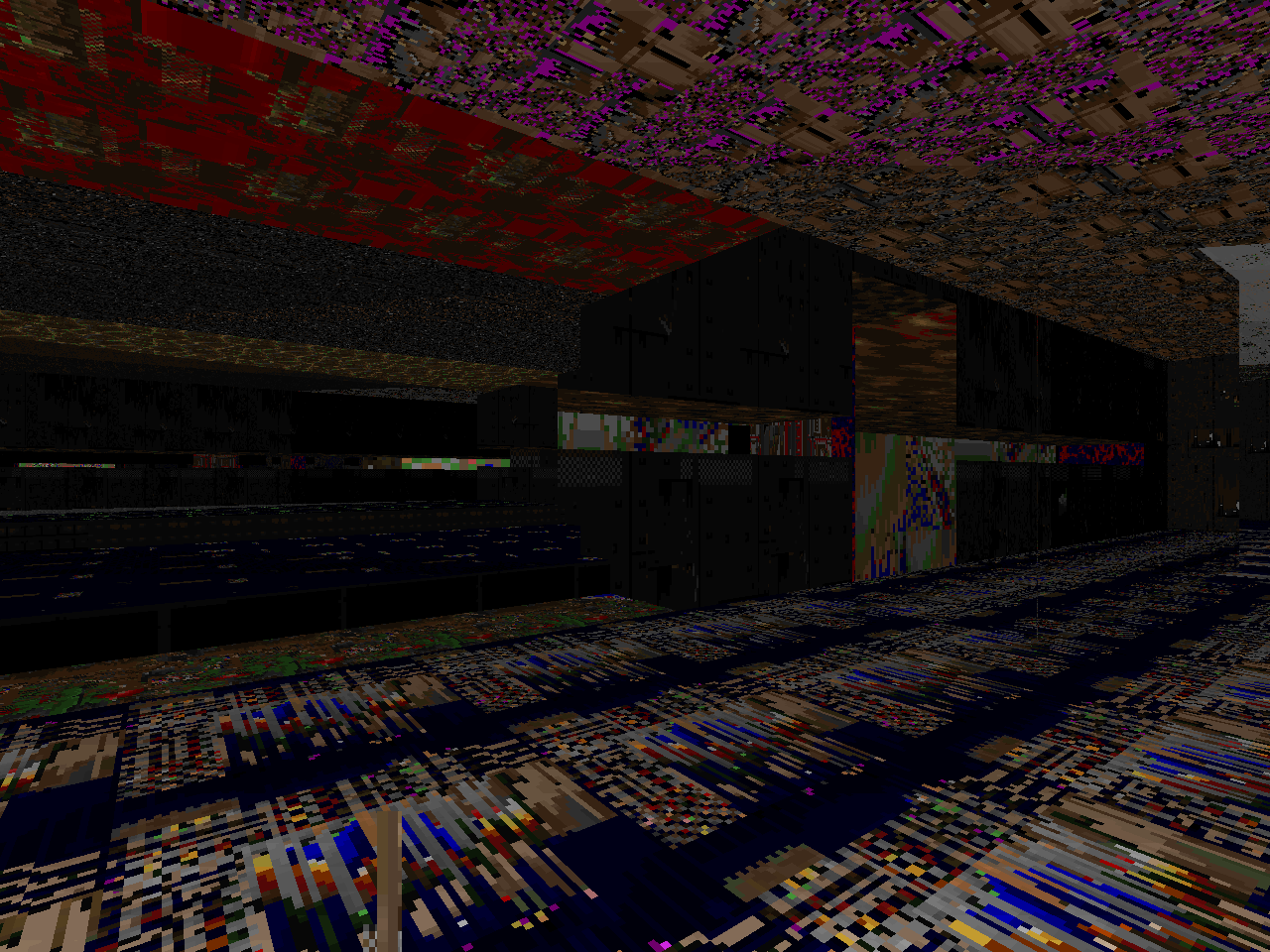
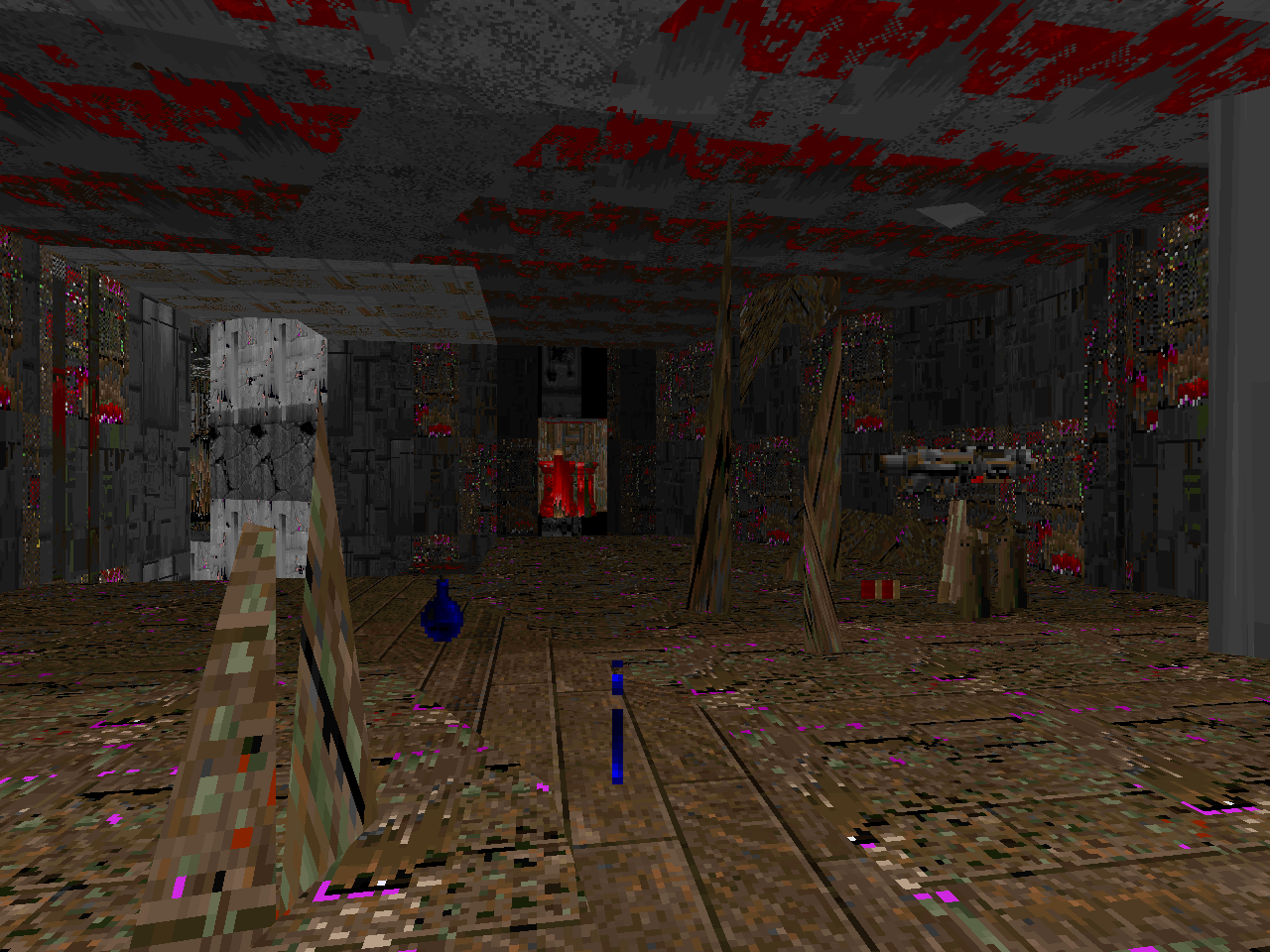
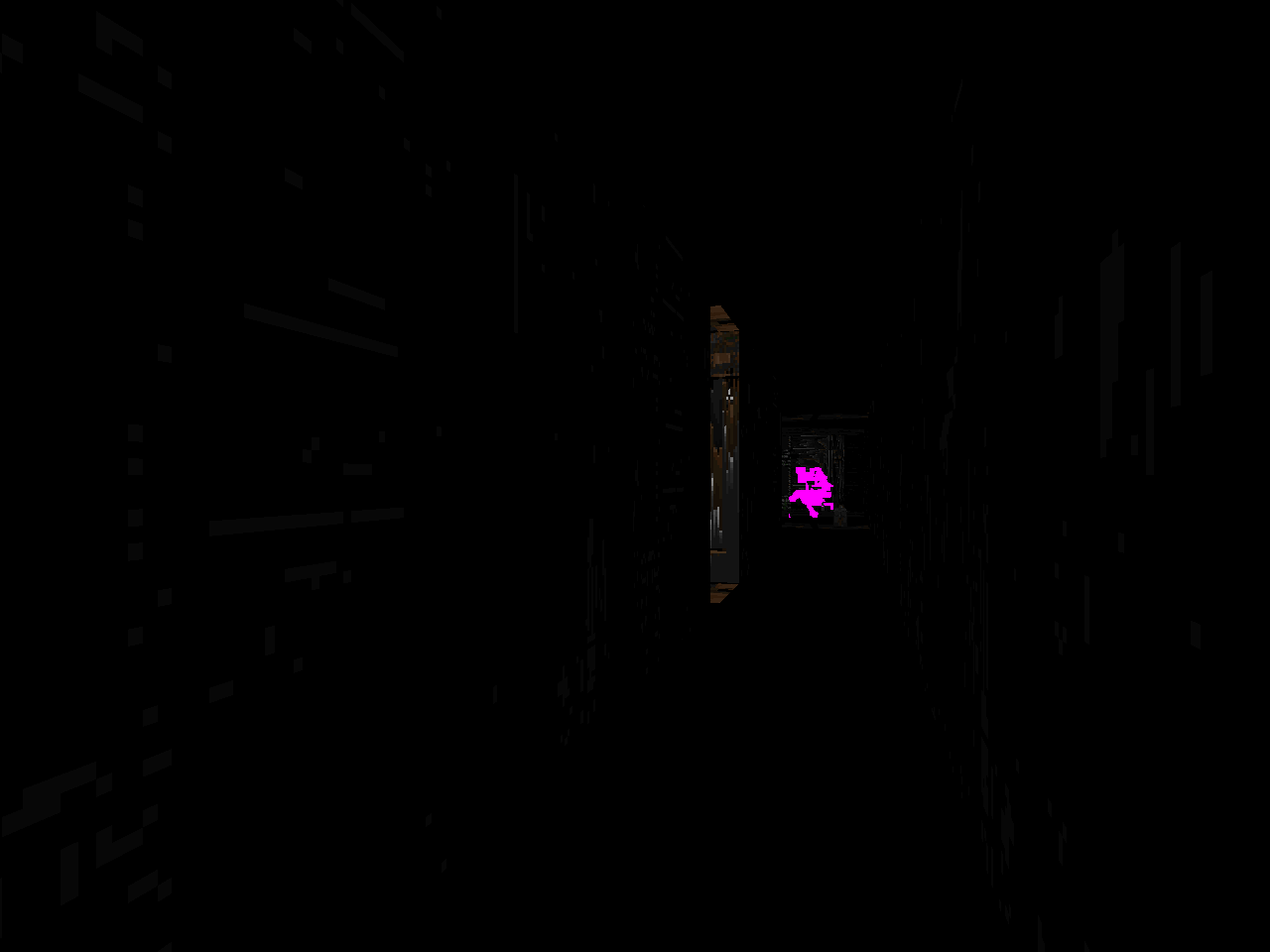





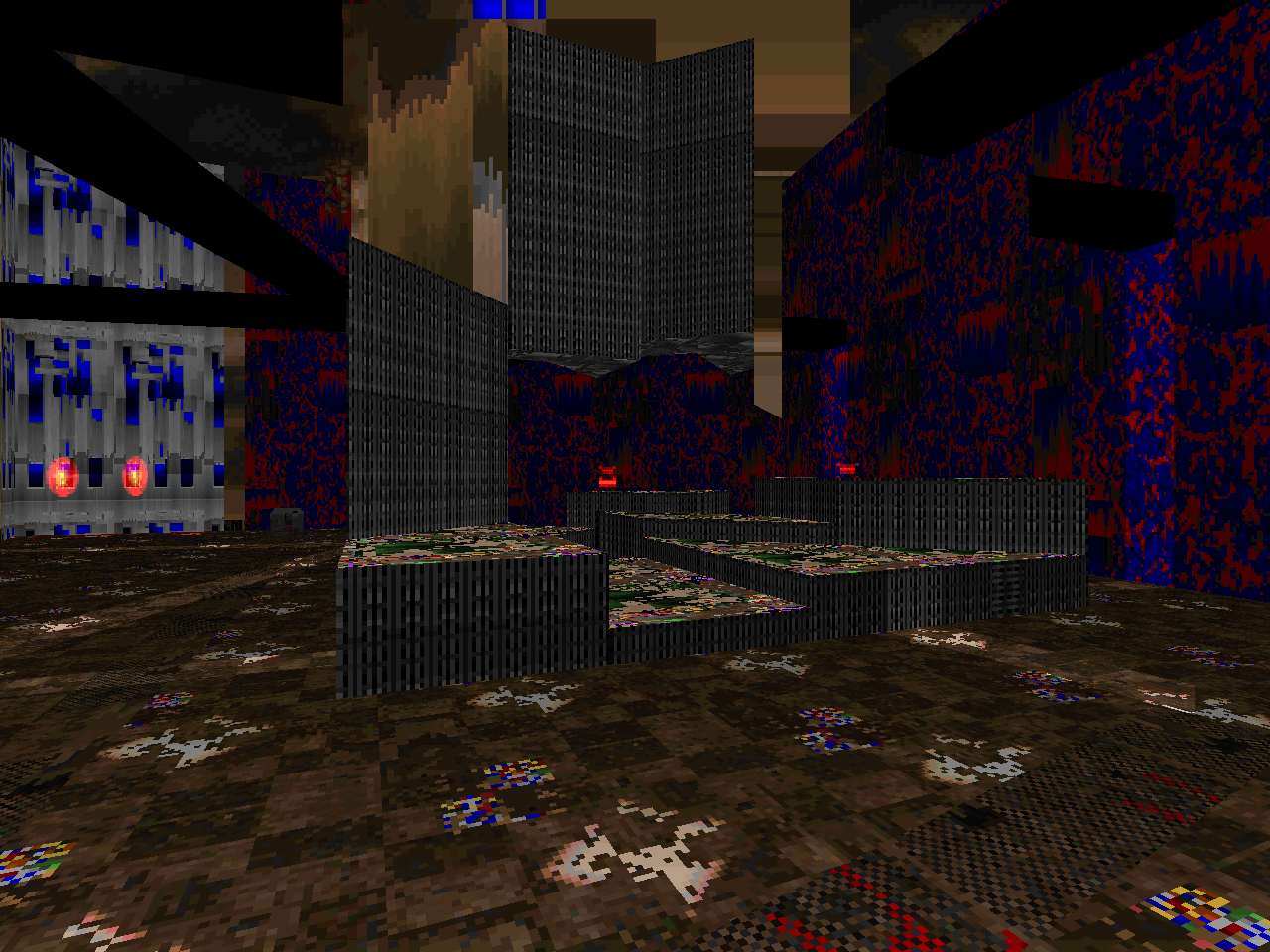
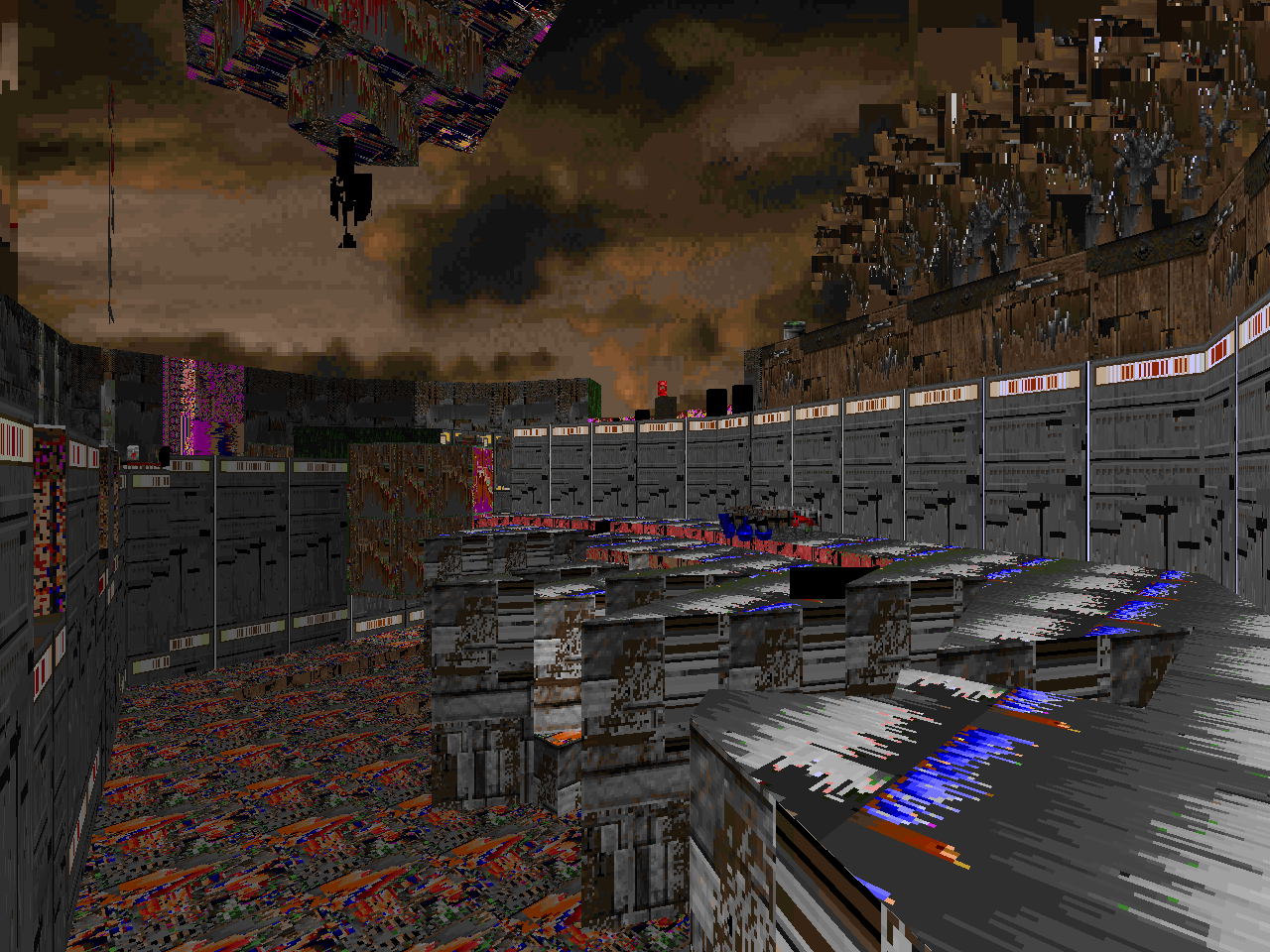
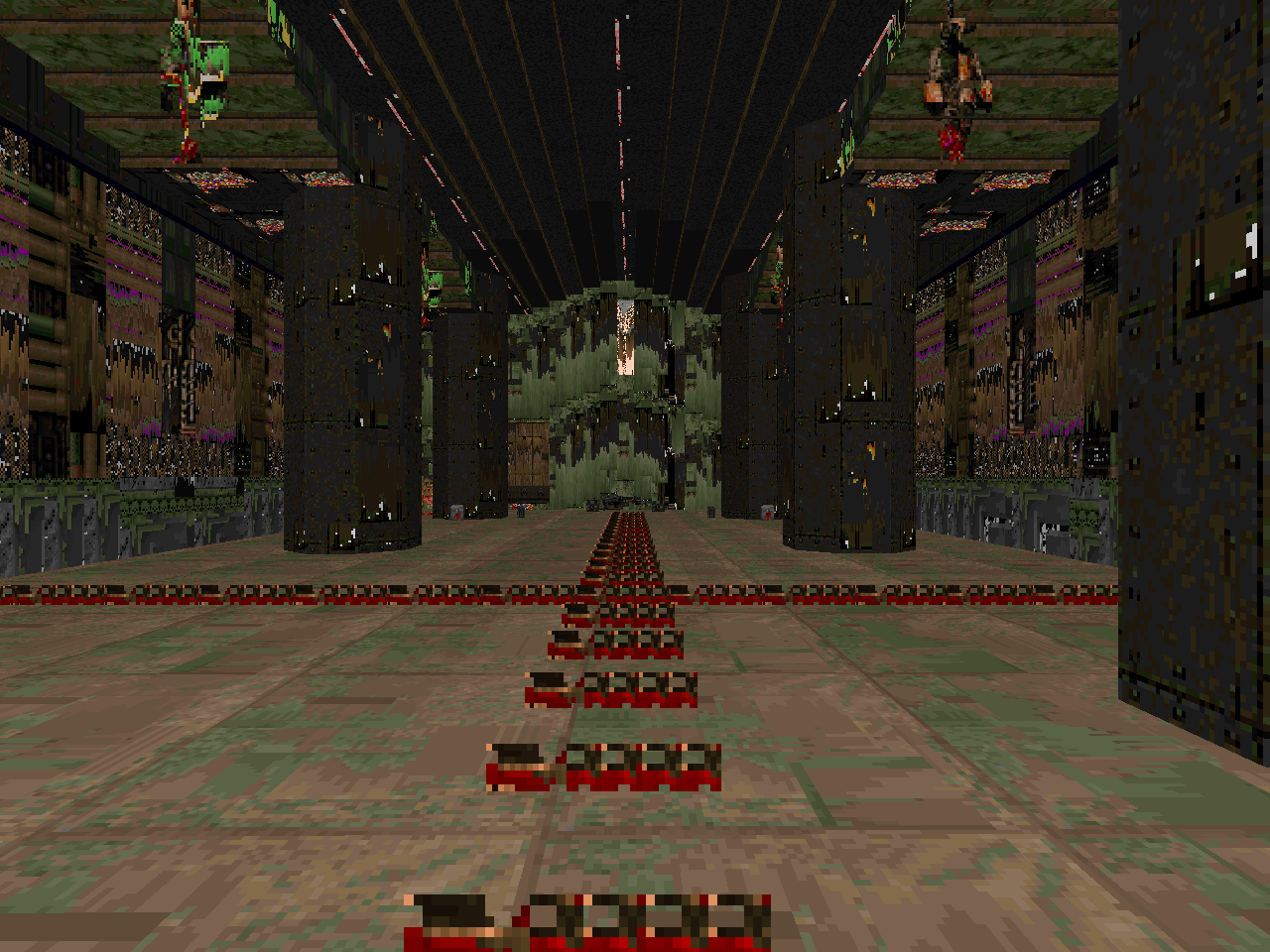


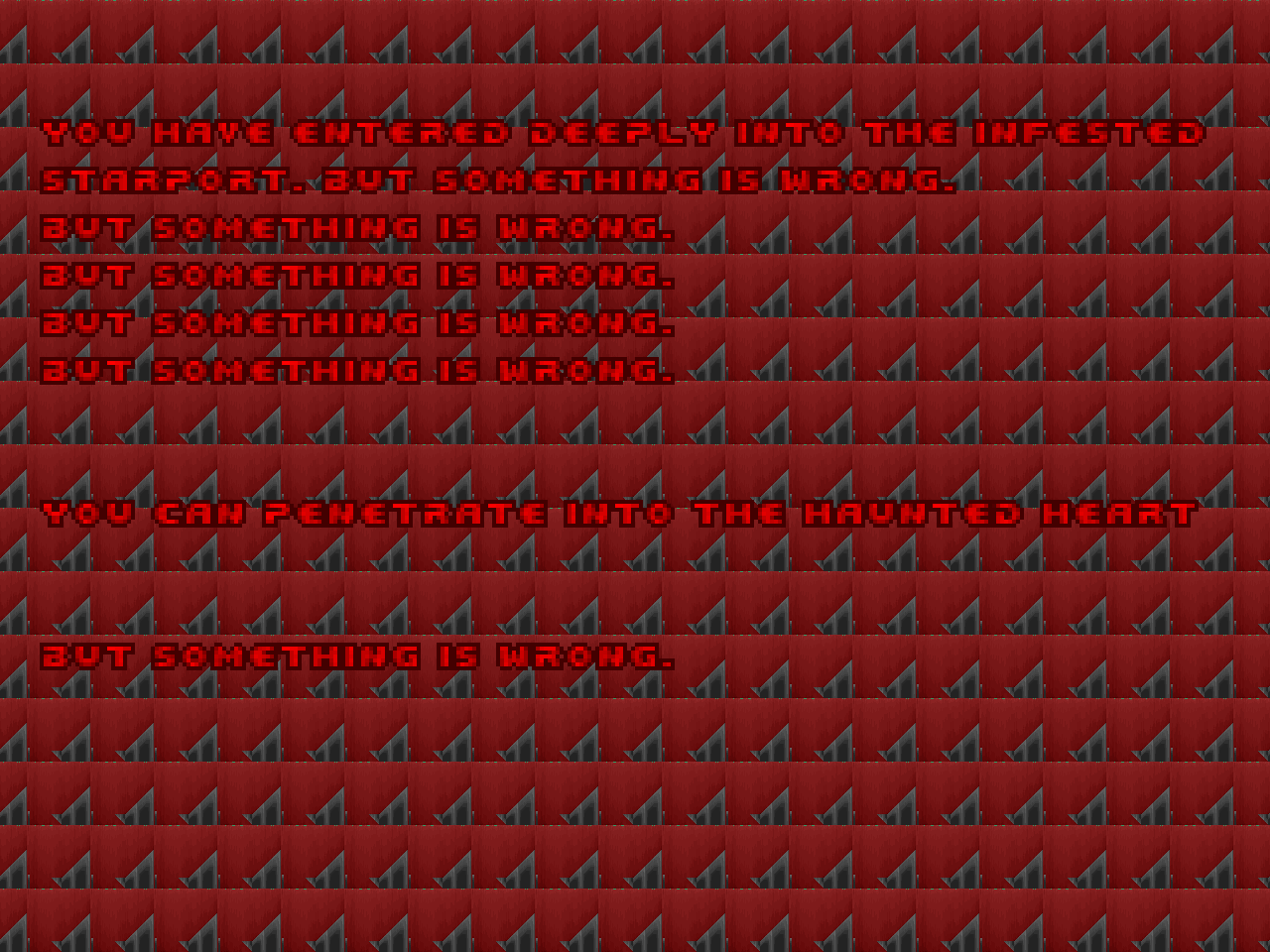


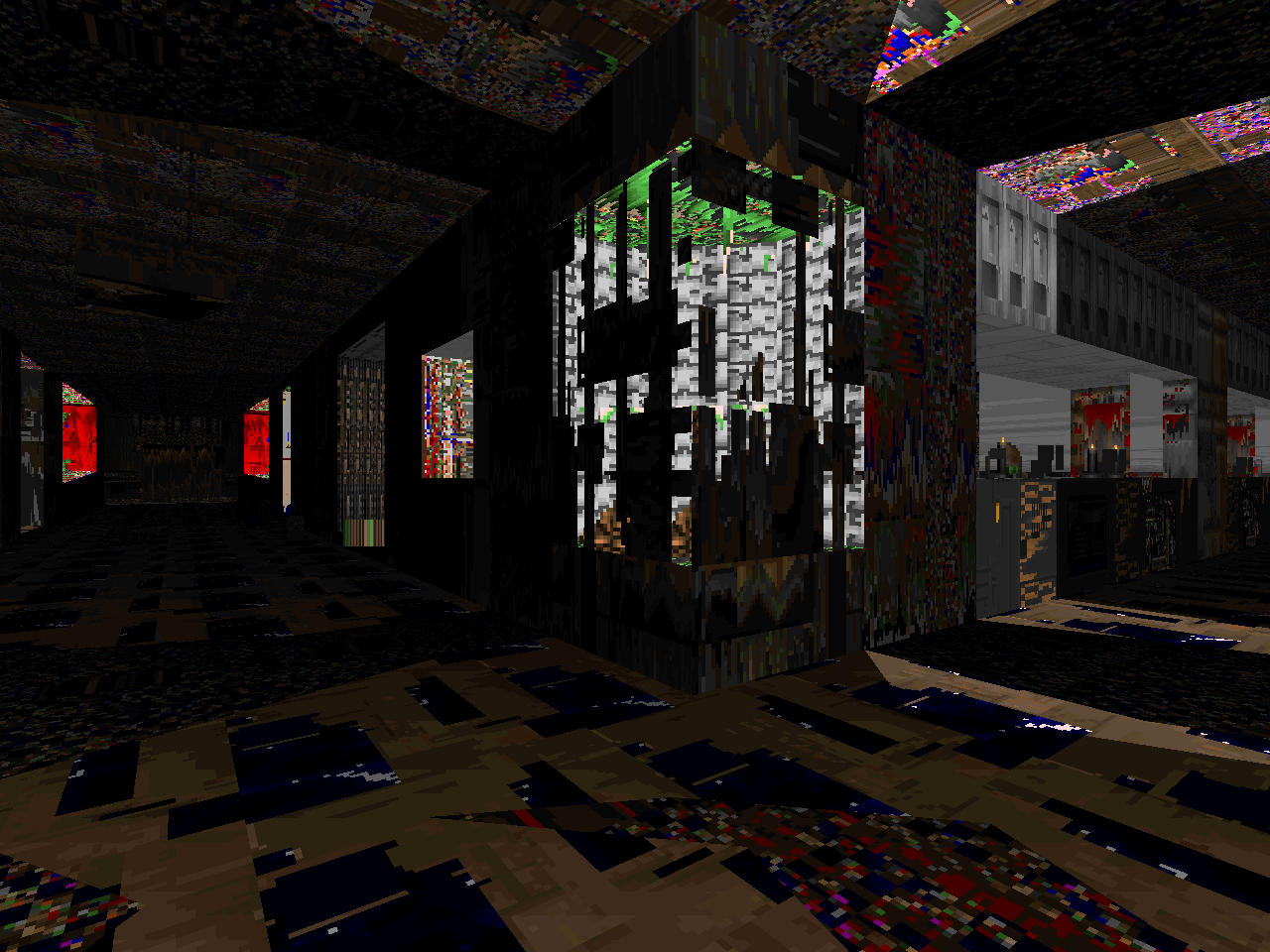
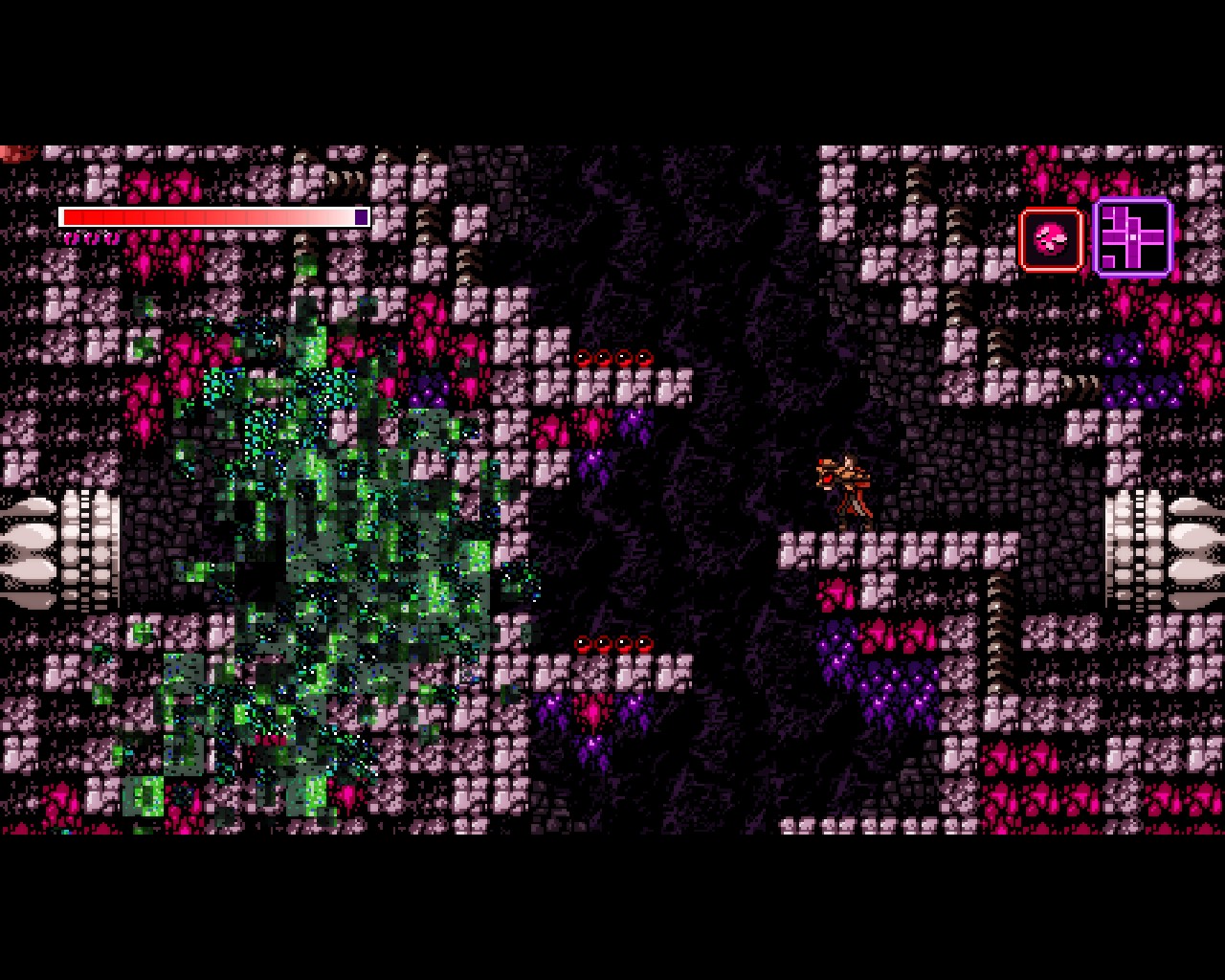
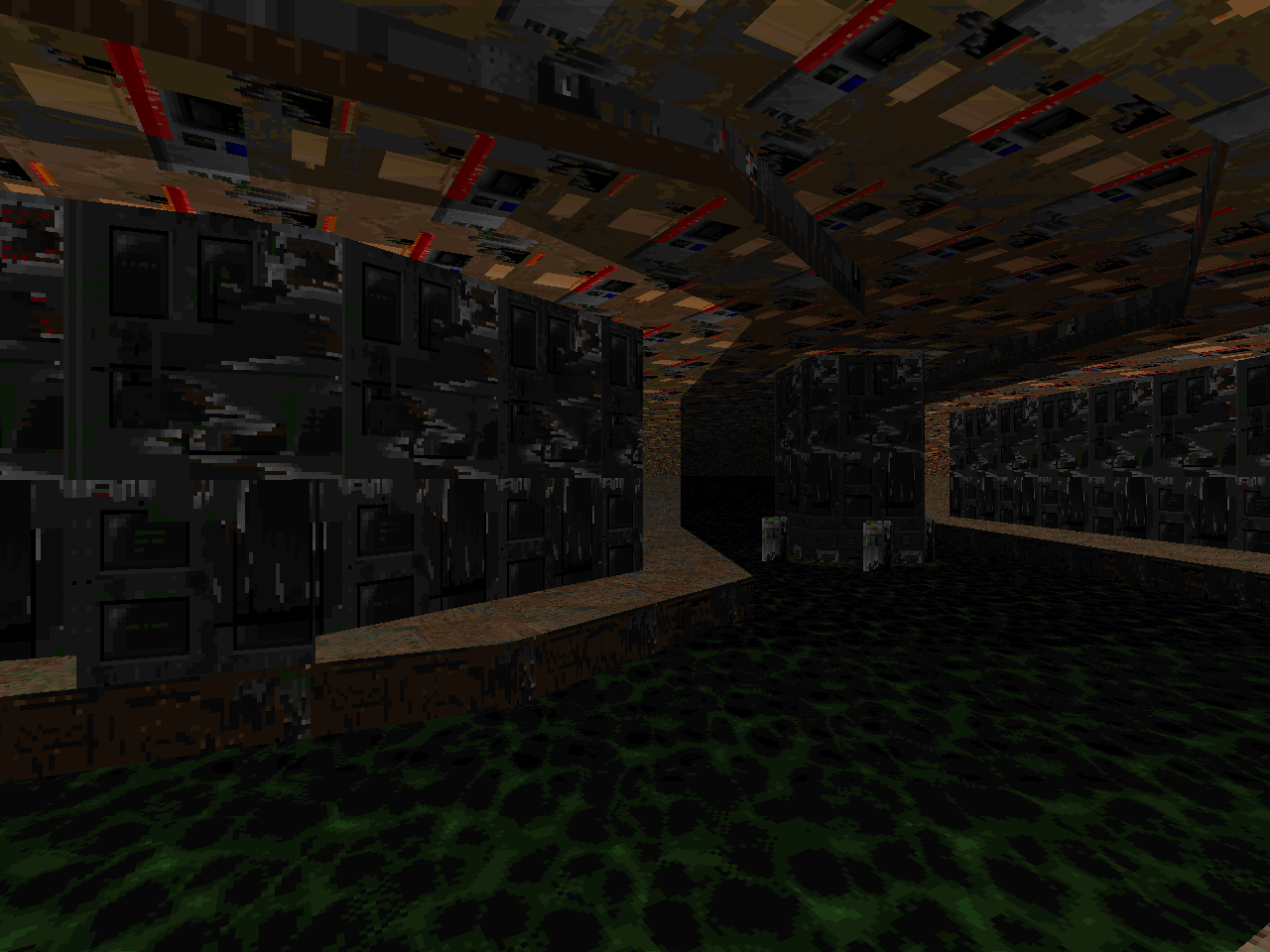
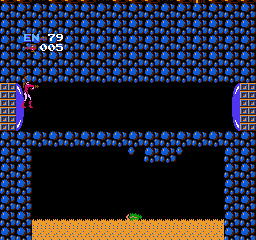
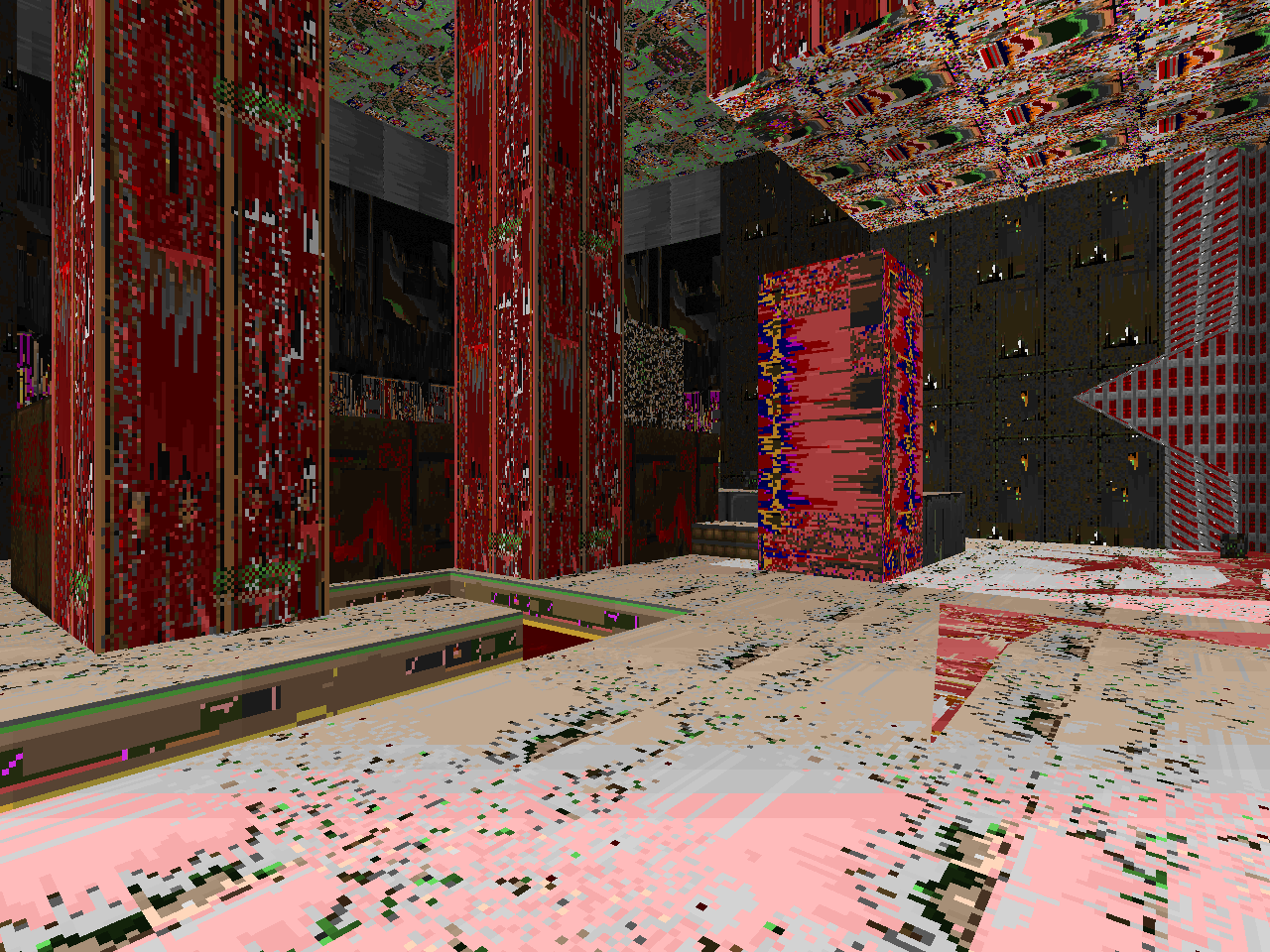
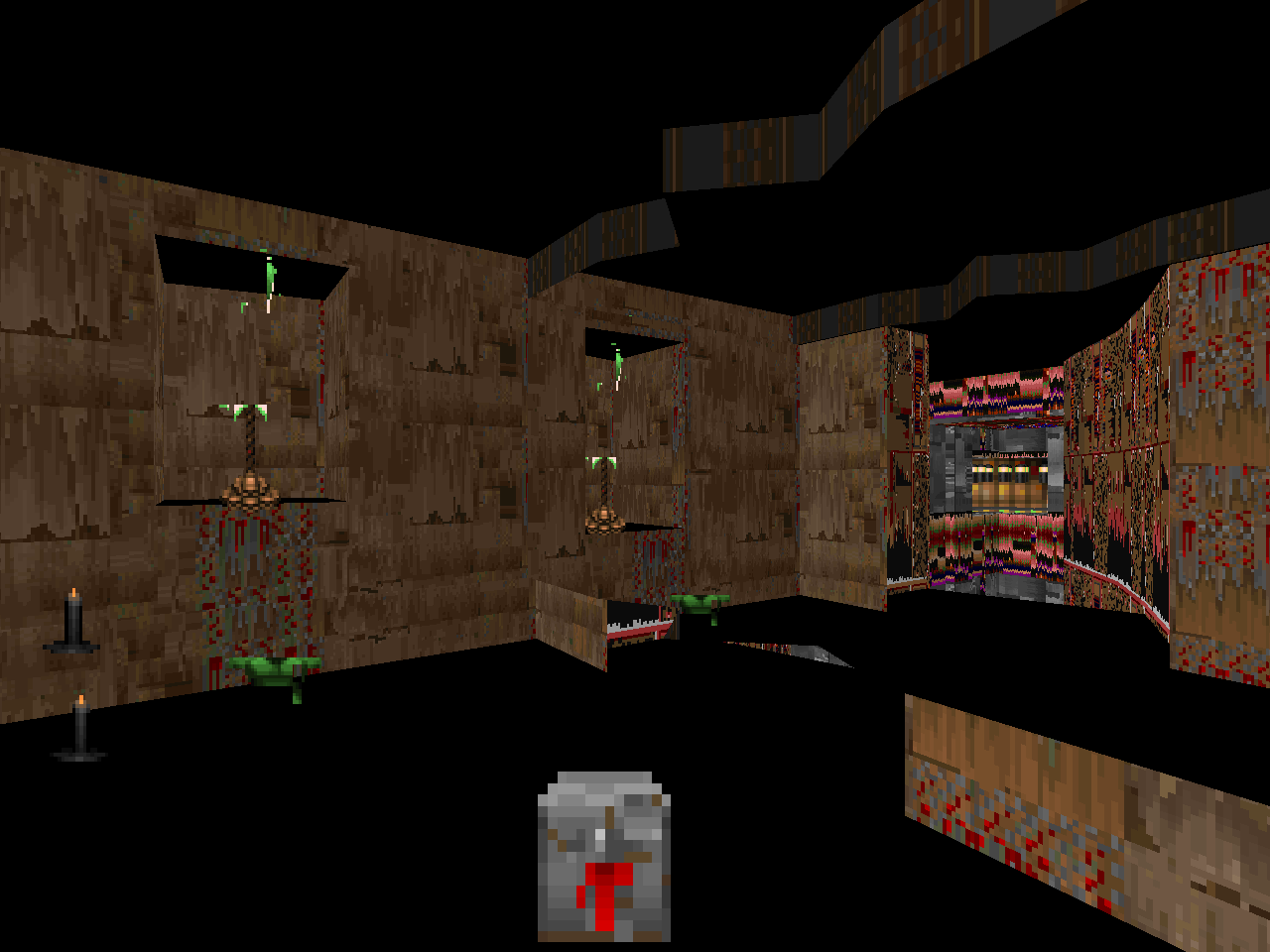
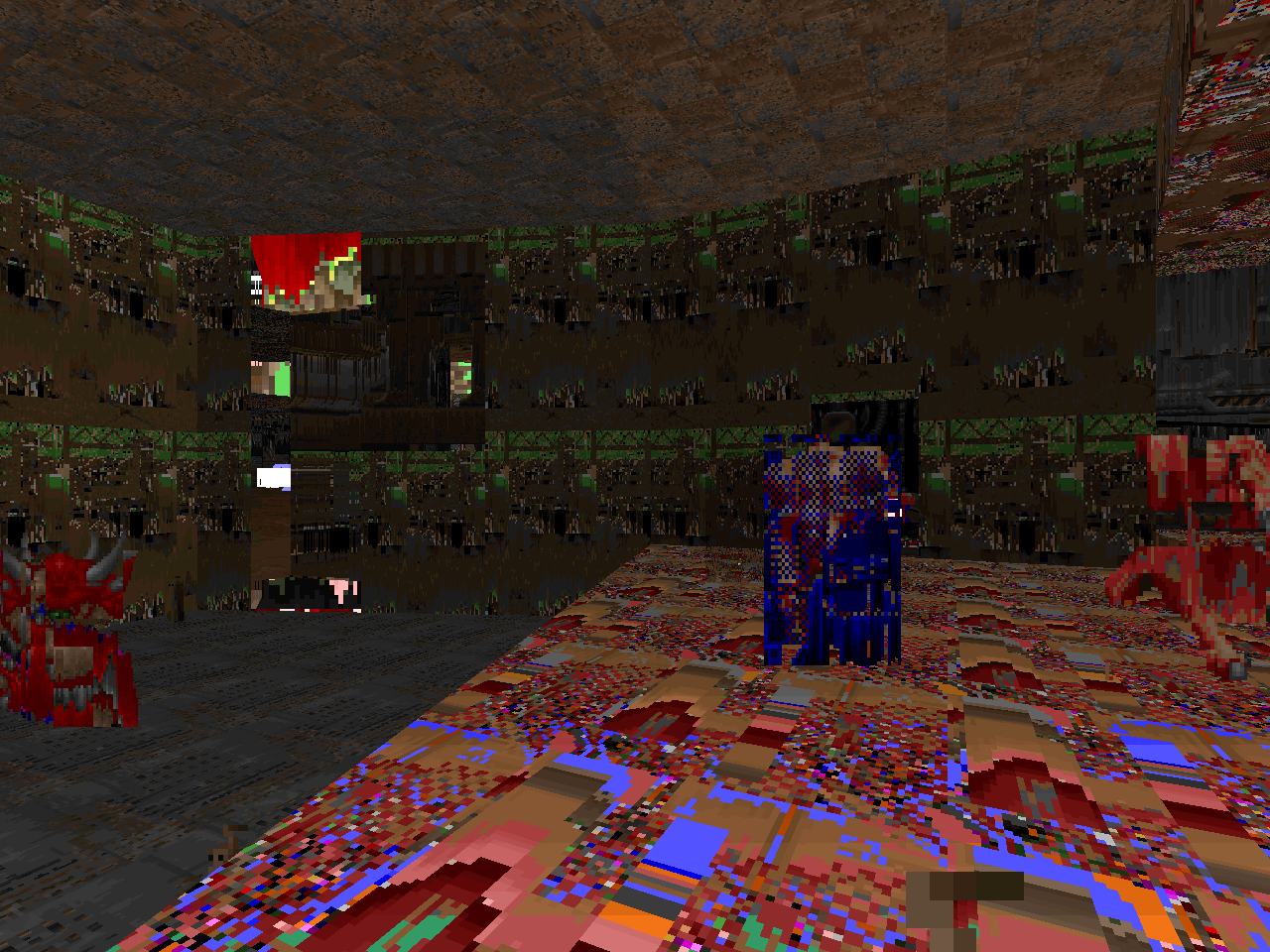
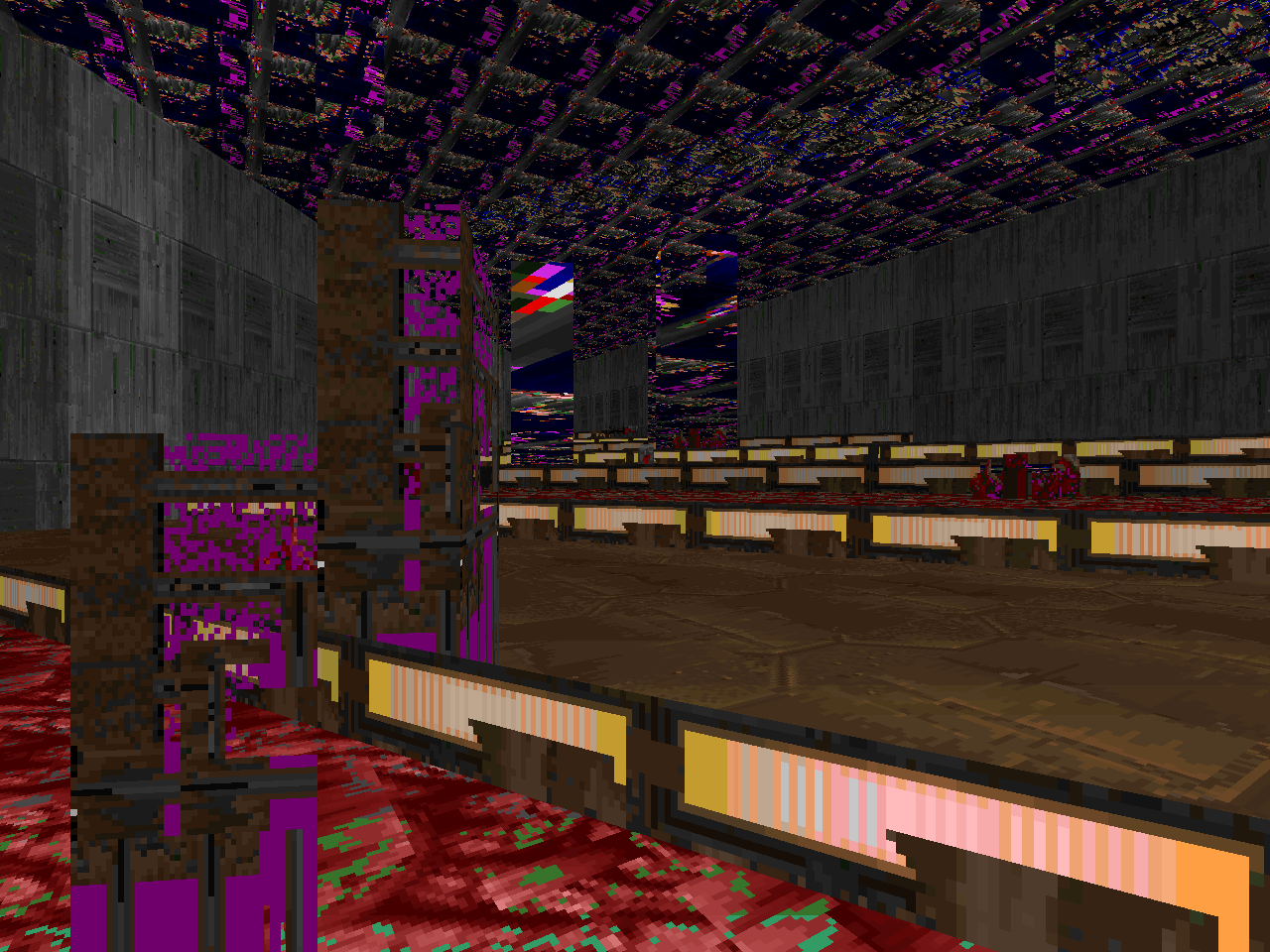
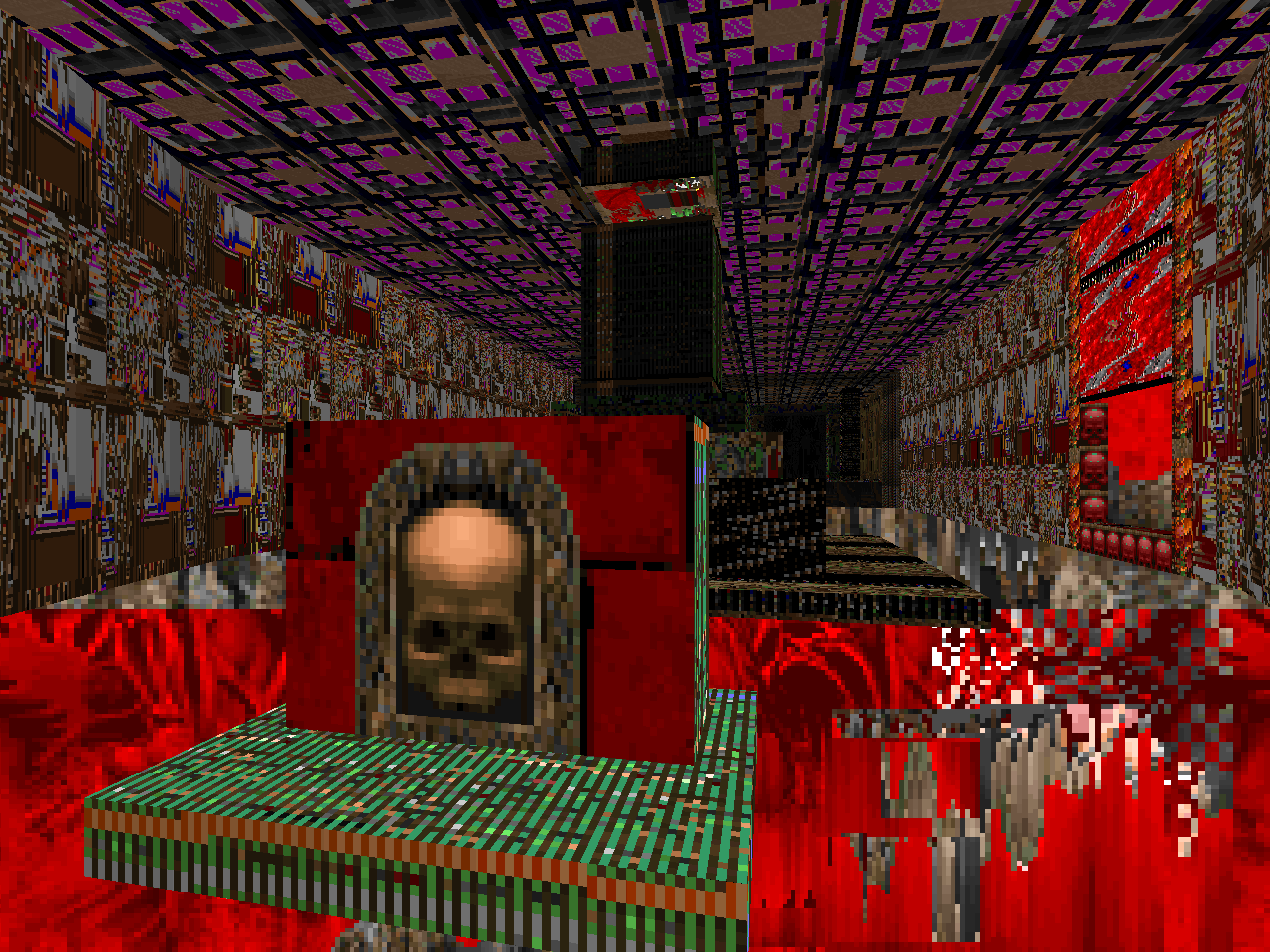

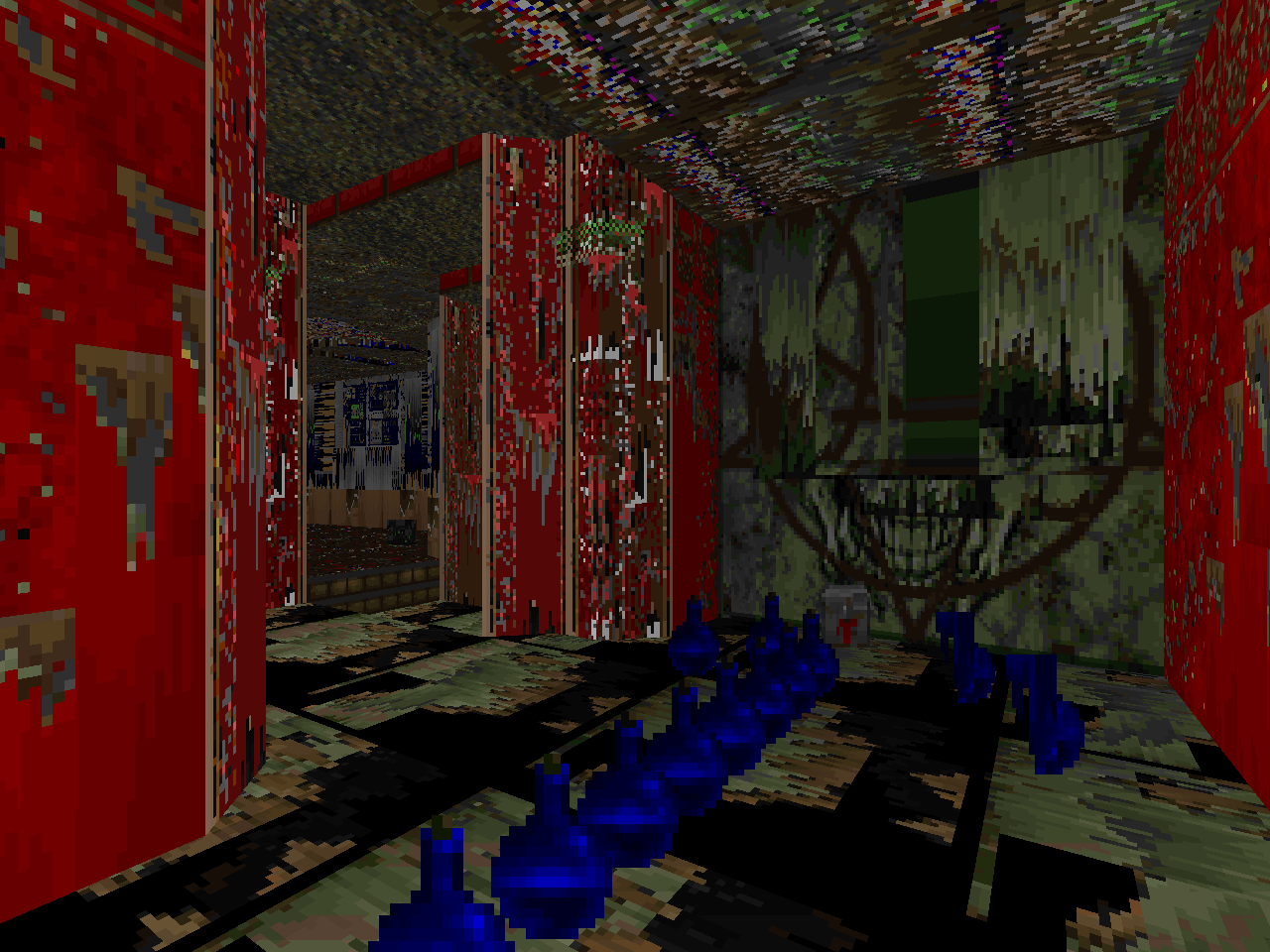






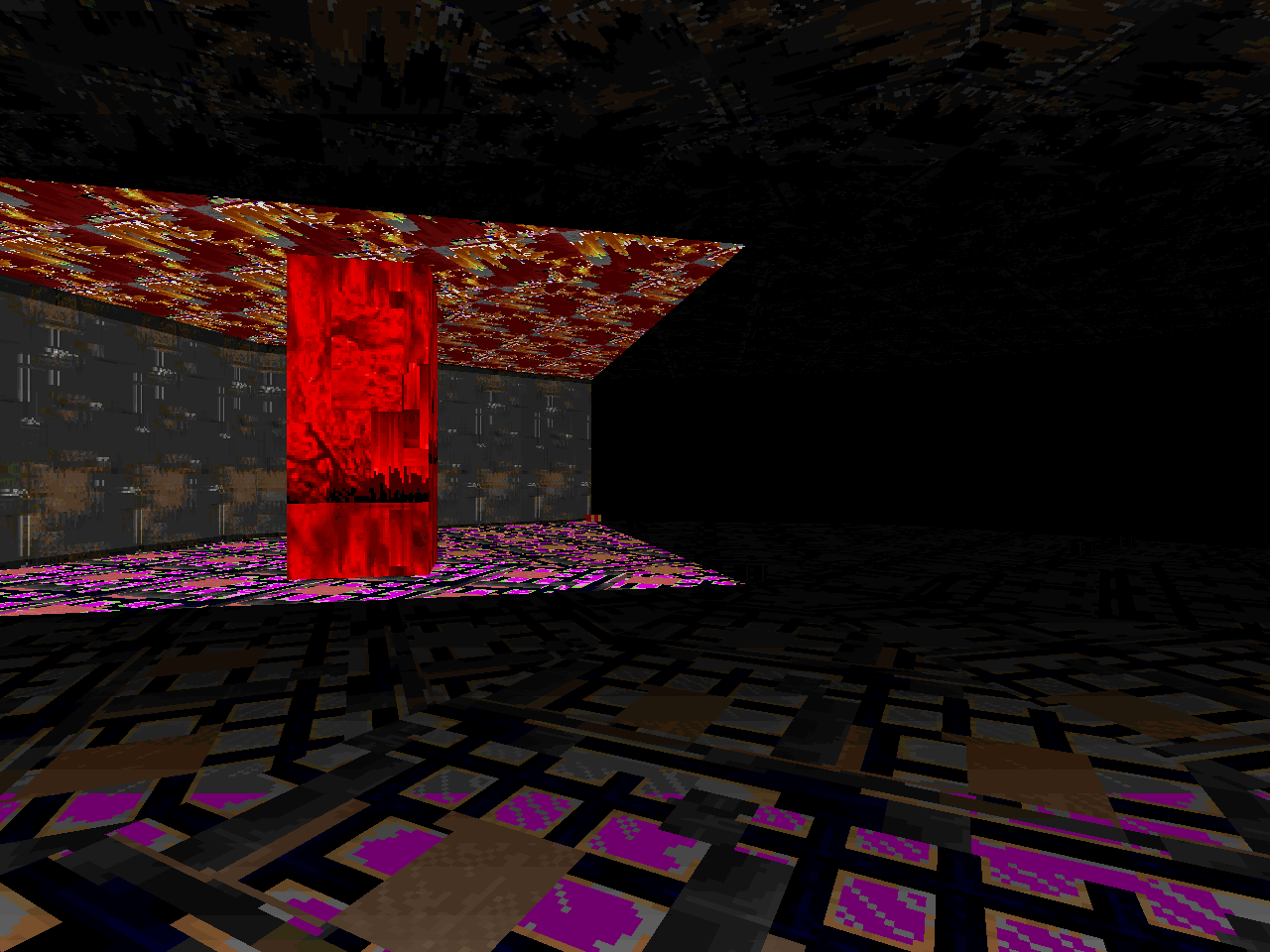
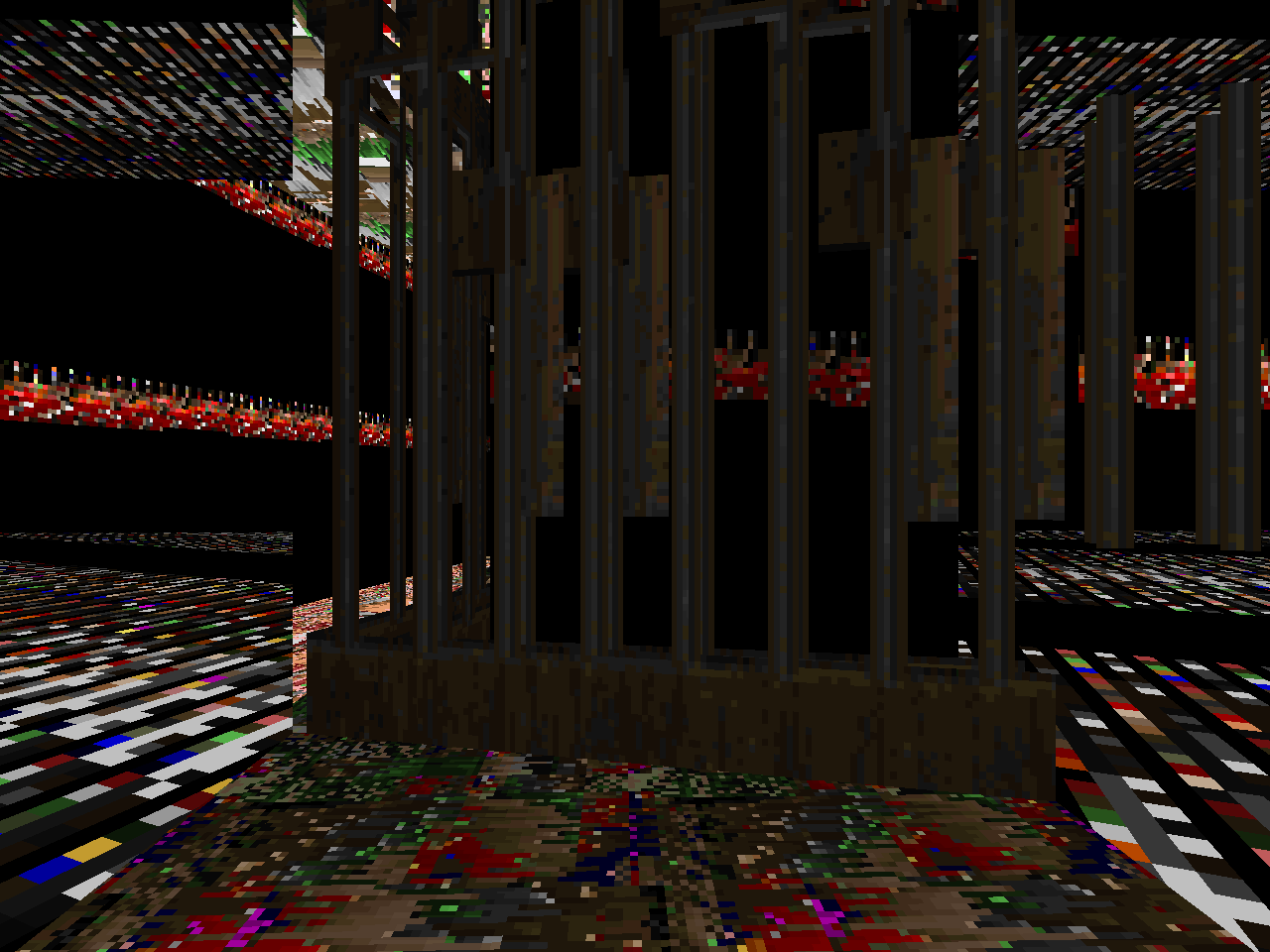
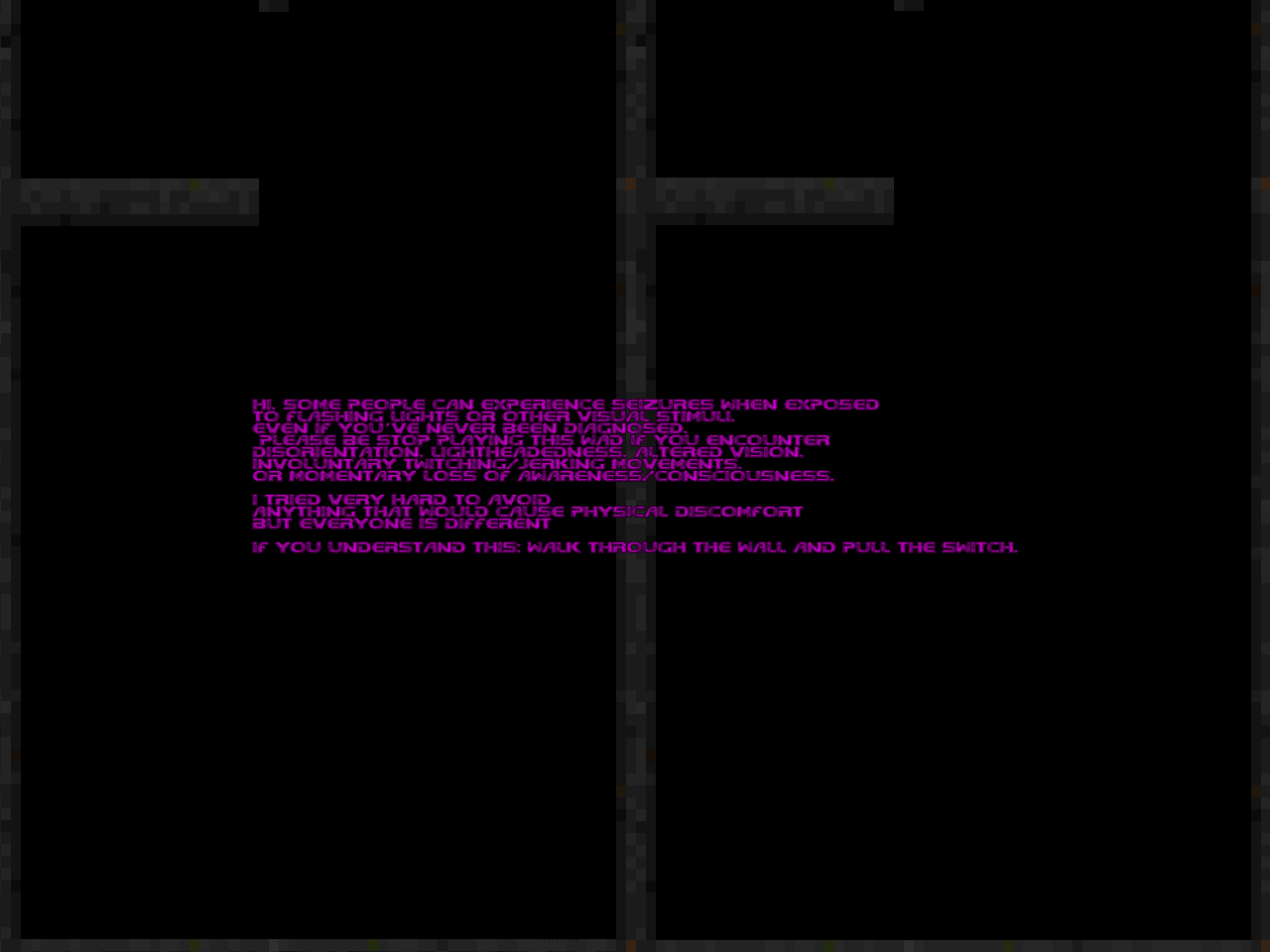
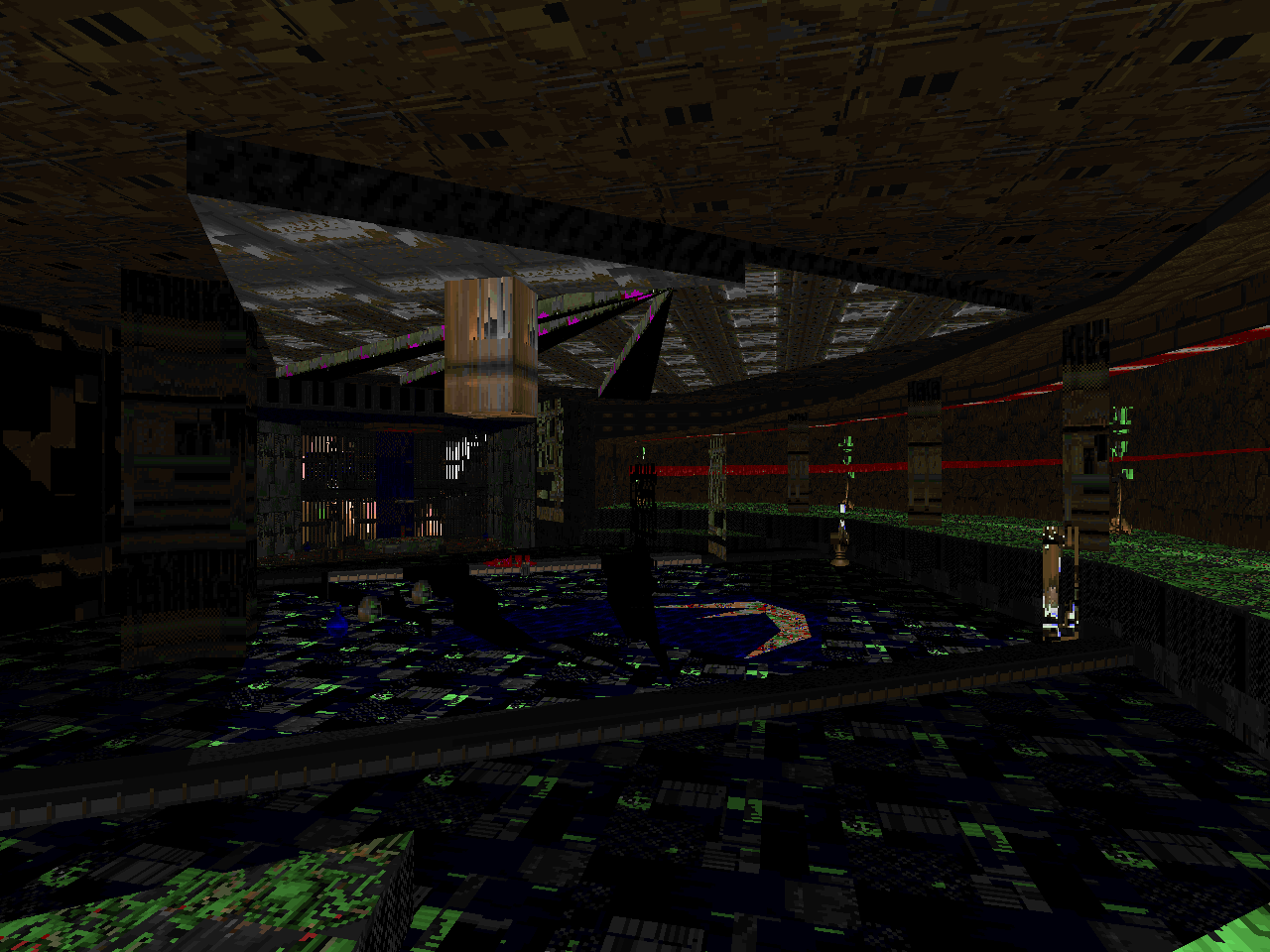


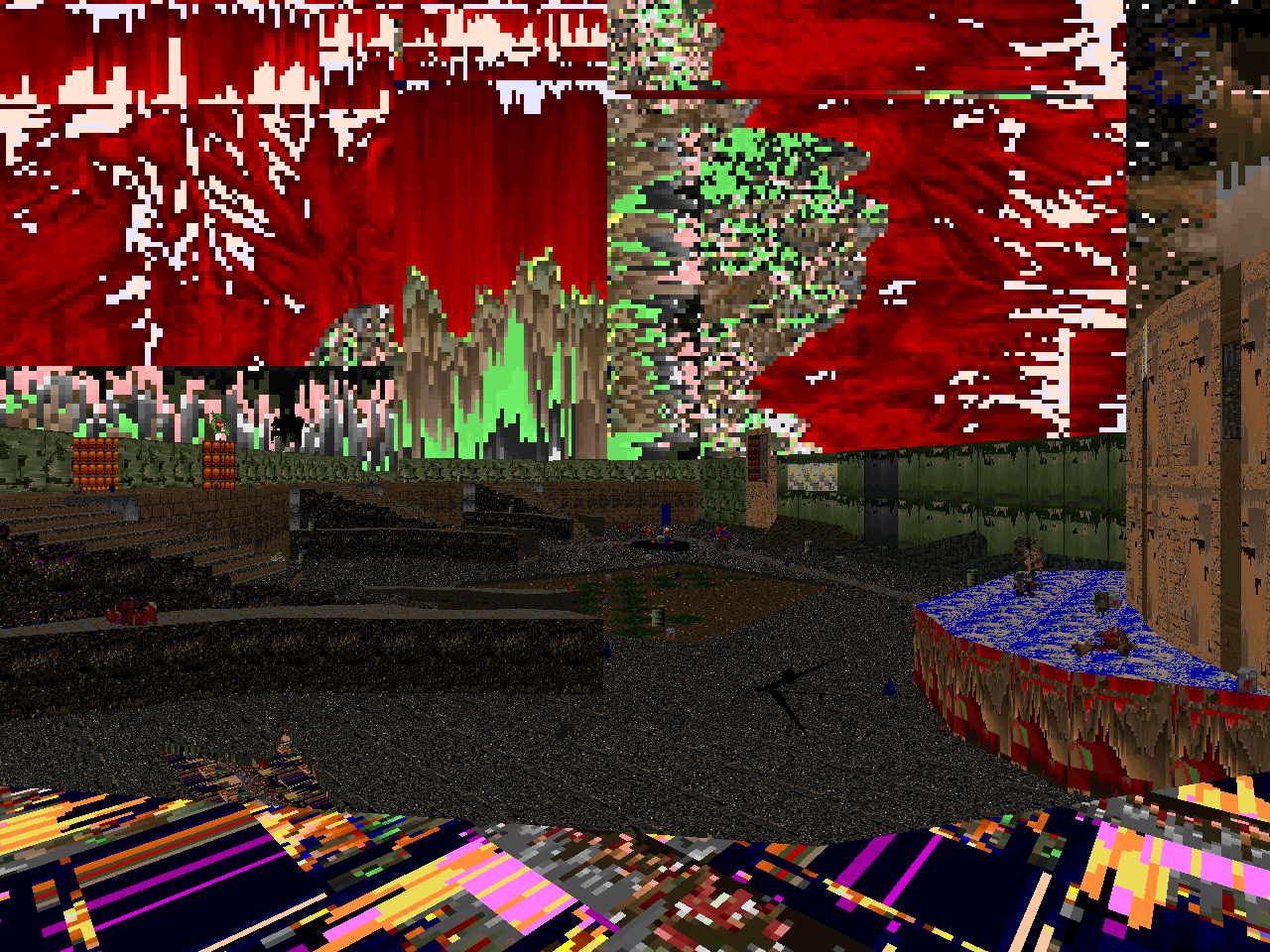

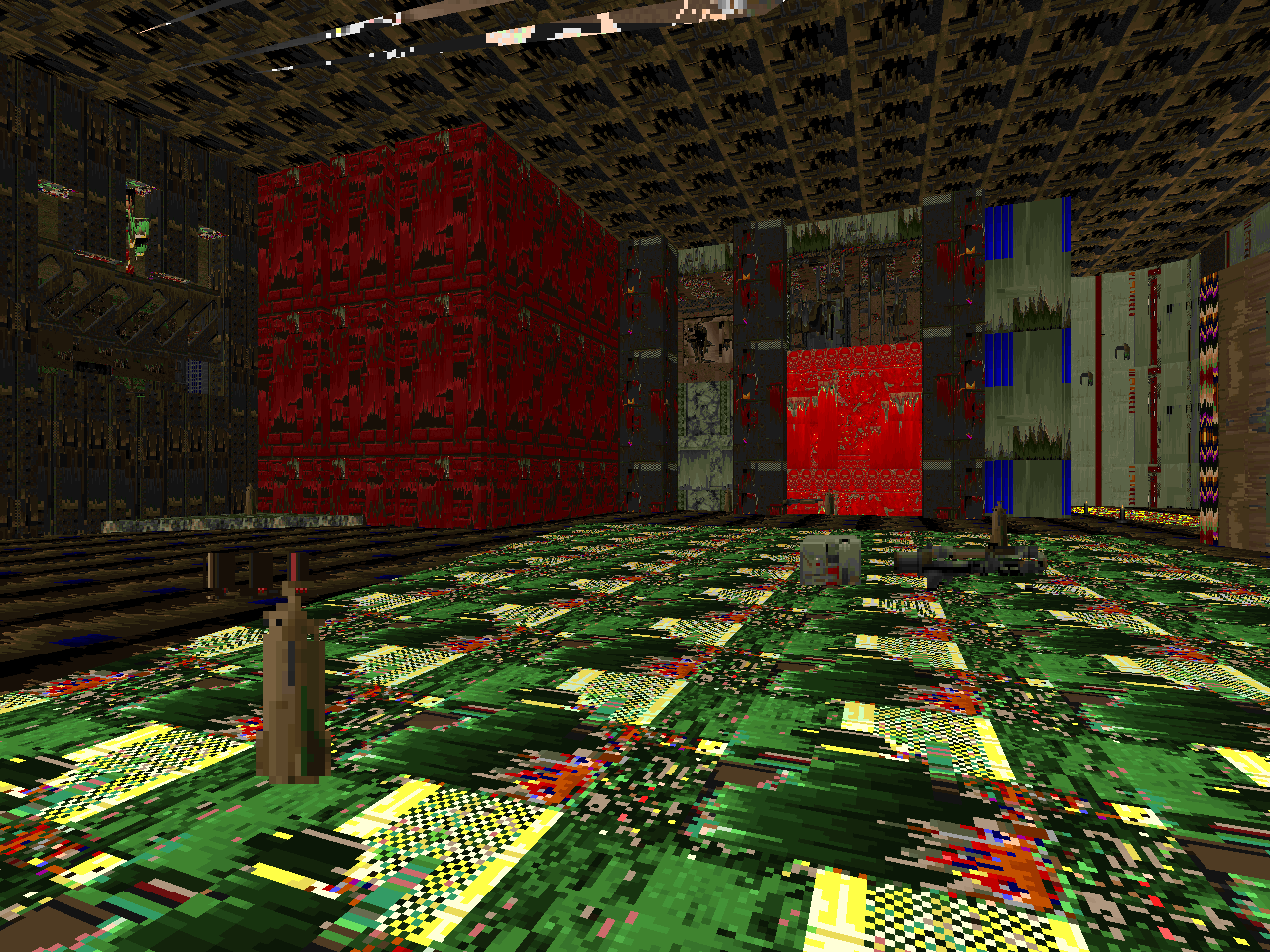
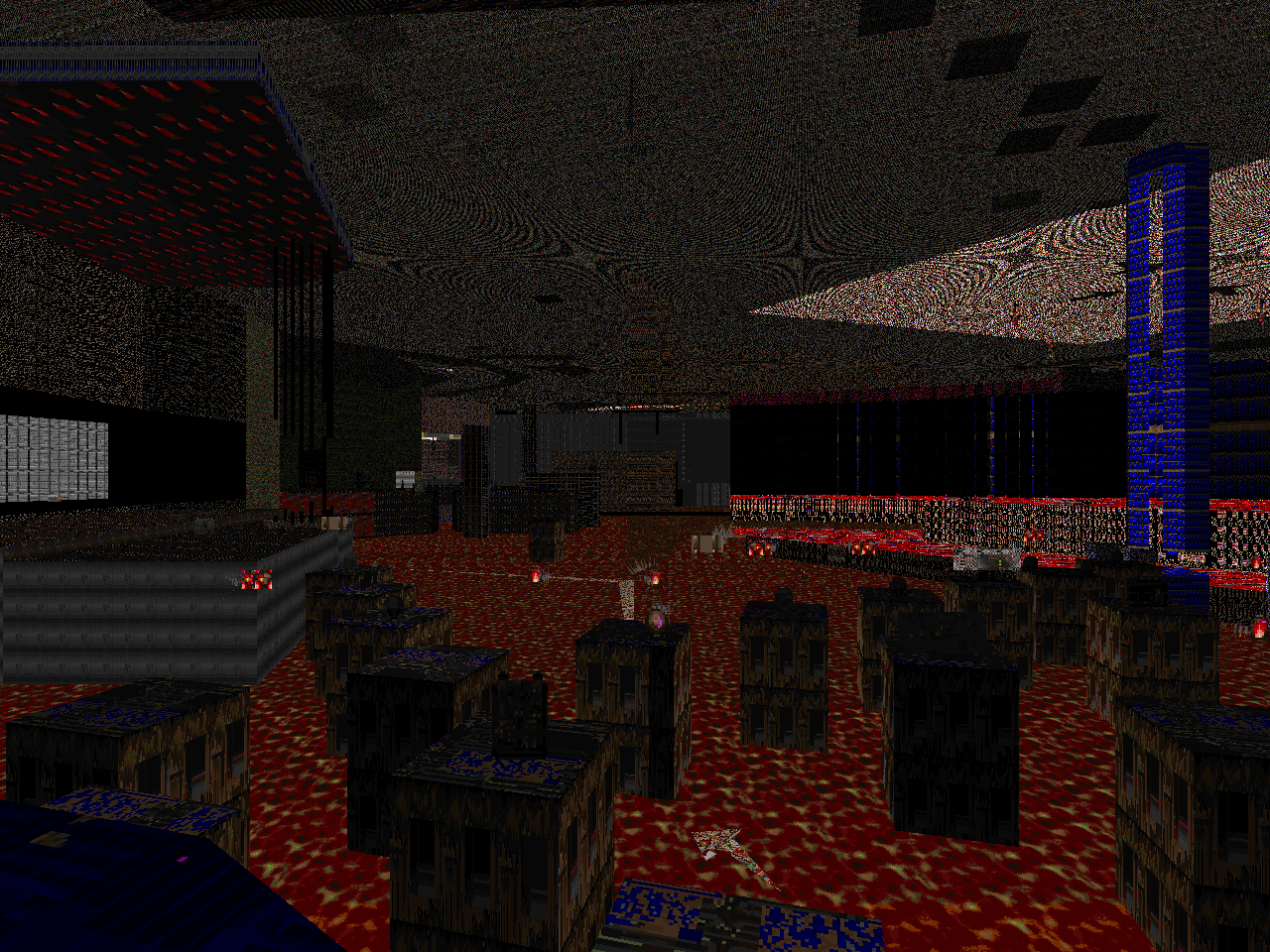
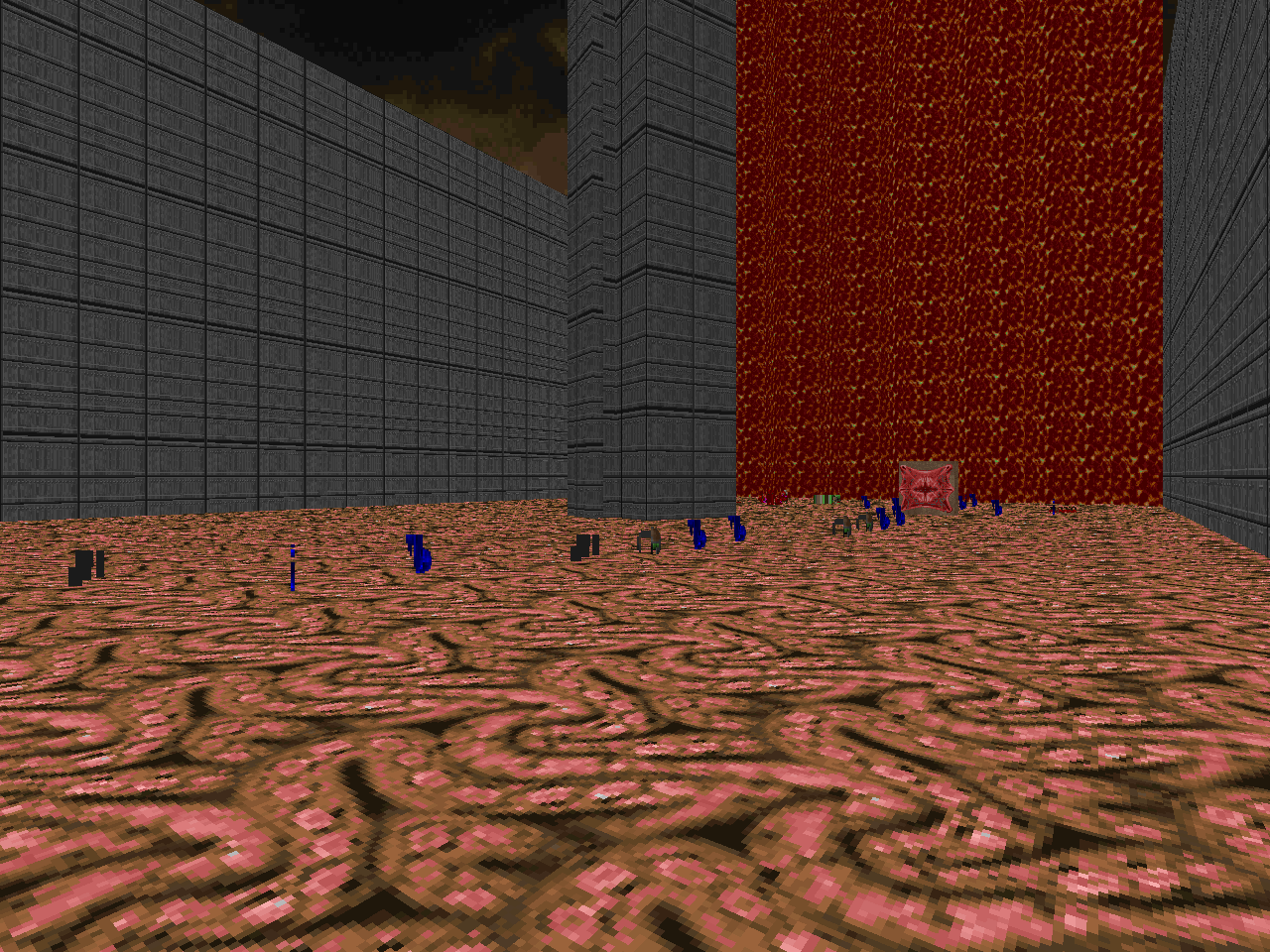


I really enjoyed this review - and the meditation on doom mapping trends even more so. Inspired by your blog I've been doing my own odyssey into Doom's history, and I very much agree, there needs to be more adventurous exploration and puzzling instead of jamming everything into the slaughterhole. It's time for me to start learning how to make maps myself!
ReplyDeleteOne of your best reviews!
ReplyDeleteThank you very much.
Delete